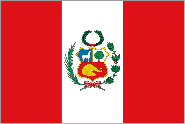Land Degradation and Deforestation
Taxonomy Term List
Building Resilient Communities, Wetland Ecosystems and Associated Catchments in Uganda
The impacts of climate change, coupled with other human and environmental stressors, is increasing degradation of wetlands and their associated ecosystem services in Uganda. This is negatively affecting the livelihoods of the people living in and around the wetlands – around 4,000,000 people. In fact, over 80% of the people living adjacent to wetland areas in Uganda directly use wetland resources for their household food security needs.
Given that wetlands are highly vulnerable to changes in the quantity and quality of their water supply, climate change will most likely substantially alter ecologically important attributes of wetlands and will exacerbate the impacts from human activity. On the other hand, the loss of wetlands could exacerbate the impact of climate change in as they provide fundamental services that contribute to mitigation of such impacts.
Implemented by Ministry of Water and Environment in partnership with Ministry of Agriculture Animal Industry and Fisheries and Uganda National Meteorological Authoritym, with funding from Green Climate Fund, United Nations Development Program (UNDP) and Government of Uganda, the 8-year project Building Resilient Communities, Wetland Ecosystems and Associated Catchments in Uganda (2017-2025) is addressing the management of critical wetlands affected by a changing climate.
While restoring wetlands and their ecosystem services, based on the wise-use principles and guidelines outlined by the Ramsar Convention on Wetlands, it is also supporting sustainable land management practices and reforestation, resilient agricultural practices and alternative livelihoods for communities living in these areas. This support will reduce the pressures on the wetlands. Finally the project is strengthening the climate information and early warning systems to support these communities to make climate-resilient decisions. Up to 800,000 people in 24 districts of East and Southwestern Uganda will directly benefit.
The project is currently in its 5th year of implementation. Achievements to date include:
- 38,941 ha of degraded wetlands restored;
- 6,655ha of degraded catchment rehabilitated and/or restored;
- An increase of 64% in agricultural income and livelihood among households;
- 38% of the population have access to improved climate information.
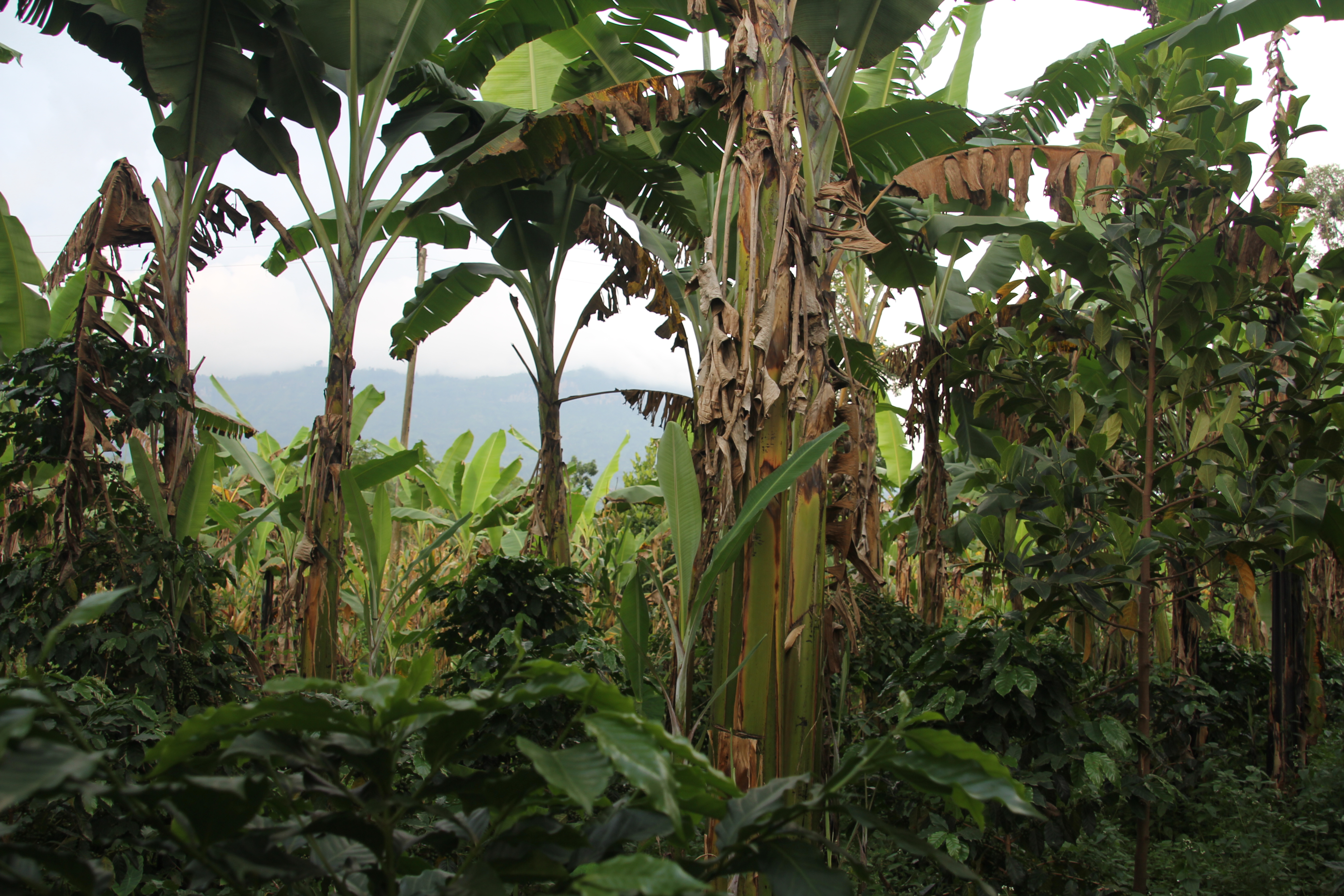

News article
News Article: New Vision (4 February 2019) - Rugunda Launches Wetlands project
News Article: Red Pepper (4 February 2019) - Govt Urges Ugandans to Support Restoration of Wetlands
ProDocs
Uganda, wetlands provide many important functions to the people, particularly in the context of food security. This is in addition to its role as a habitat for biodiversity that is also important for the economy. According to a recent 2013 study on the value of wetlands in Uganda, several market and non-market benefits are identified: “The market benefits include water for domestic use and watering of livestock, support to dry season agriculture, provision of handicrafts, building materials, and food resources such as fish, yams, vegetables, wild game, and medicine. The non-market benefits include flood control, purification of water, and maintenance of the water table, microclimate moderation, and storm protection. Wetlands also serve as habitats for important flora and fauna, have aesthetic and heritage values, and contain stocks of biodiversity of potentially high pharmaceutical value. Over 80% of the people living adjacent to wetland areas in Uganda directly use wetland resources for their household food security needs.” In addition to supporting food and water security, wetlands also support income generation and employment. “Of a total population of 34 million Ugandans, it is estimated that wetlands provide about 320,000 workers with direct employment and provide subsistence employment for over 2.4 million.”
Wetland health and resilience can easily be compromised by climate change impacts. Climate change models for Uganda predict that temperatures will continue to increase, and there will be changes in the seasonal distribution and amount of rainfalls, more frequent extreme weather events, and increases in the frequency of heavy rainfalls. Increases in temperature and erratic rainfall will result in more frequent and intense floods, droughts and heat waves, which will directly threaten wetlands and livelihoods that rely on its healthy ecosystem services. Hydrologic and drainage maps of the project targeted sites (the eastern and southwestern Wetlands Basin) indicate that most of the freshwater inflows pass through the wetlands and natural forests. These systems have played an integral role in maintaining the quality of water over the centuries. However, over the last three decades, climate change impacts, as well as other baseline (non-climate) issues such as excessive sedimentation and non-native species invasions, have resulted in substantial water quality deterioration.
Output 1: Restoration and management of wetland hydrology and associated forests
Under this sub-component, at least 760 km2 of degraded wetlands and its associated catchment will be restored and the lives of 500,000 people will be improved in selected districts of Eastern and South Western Uganda. The overall aim of the intervention is to restore the ecological and hydrological integrity of the wetland and support the development and implementation of a community-based framework for wetland management plans. This will help support climate risk management and resilient livelihoods through enhanced ecosystems services in the area.
Output 2: Improved agricultural practices and alternative livelihood options in the wetland catchment
This output will target at least 150,000 farmers including those who currently do not have secure access to irrigation, land-poor farmers, women-headed households, and the landless, to build more climate-resilient livelihoods. Investments in small-scale rural infrastructure (shallow bore wells, drip irrigation, tilling tools) for agricultural purposes, especially on-farm water management infrastructure such as dams, canals, drip irrigation systems, as well as farming best practices and crop diversification will be implemented to realize high economic return given their coverage. In addition, the output will focus on technical skills training for employment in key economic sectors viable in wetland areas, such as tourism, health and construction. Most of the beneficiaries have very low levels of education and no skills that can help them find a job. Beneficiaries will be trained in specific skills with high employability potential (e.g. earth mover, driver, assistant nurse, reception clerk in hotels, desktop publishing).Output 3: Strengthening access to climate and early warning information to farmers and other target communities to support wetland management
Output 3: Strengthening access to climate and early warning information to farmers and other target communities to support wetland management
This output will focus on strengthening access to reliable climate-related information and scaling up advisories for farmers and other target communities in the two wetland target areas, to improve the adaptation capacity of the entire population in and around the wetlands – around 1 million people. This will include the expansion of networks that generate and process climate-related data into relevant information to the scale and location of local districts, villages or communities, as well as dissemination of climate-related information/services, advisories and early warnings to communities. A strong focus of this output will be on delivering actionable climate-related information to communities, taking the form of agro-met advisories for agriculture, as well as the dissemination channels for making information available to the “last mile.”
'To destroy Uganda, destroy wetlands -- Govt official', UNDP Uganda, February 2022
'Government of Uganda and UNDP launch implementation of a $44.26 million project to restore wetlands and build community resilience', ReliefWeb, 29 November 2017
'Uganda, UNDP Sign Landmark Financing Agreement to Restore Wetlands', Chimp Reports, 23 August 2017
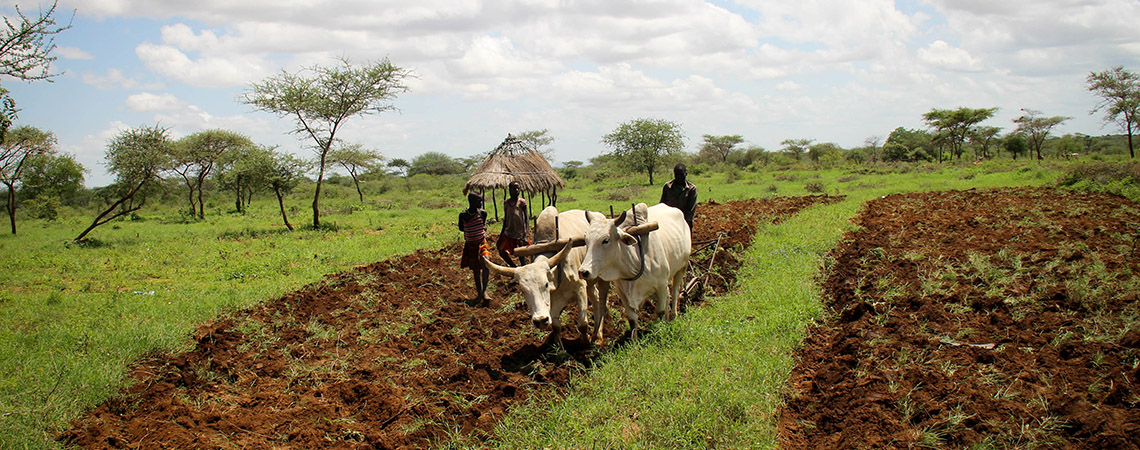
Output 1: Restoration and management of wetland hydrology and associated forests
Output 2: Improved agricultural practices and alternative livelihood options in the wetland catchment
Output 3: Strengthening access to climate and early warning information to farmers and other target communities to support wetland management
Mountain Ecosystem-based Adaptation in Nepal
The Harpan Watershed, Panchase in Nepal lies in the mid-hills of Nepal and consists of valleys, hills and the high mountains of the Himalayas. The economy of the Panchase is largely subsistence, based on crop production and livestock. There is high climatic variation due to changes in altitude and an average rainfall of 3, 355mm. The selected project site, the Harpan watershed, is about 15 km² with sub-tropical to temperate climate. There are about 900 households with a population of 4,598.
Through the global Ecosystems-based Adaptation (EbA) in Mountains Programme, UNDP, UNEP and IUCN, with funding from the German Government (BMUB), used sustainable management, conservation and restoration of ecosystems, as part of an overall EbA adaptation strategy, to reduce the vulnerability and enhance the resilience of select fragile mountain ecosystems and their local communities to climate change impacts.
For more information visit the Global Ecosystems Based Adaptation in Mountains Programme profile, or the EbA Flagship.
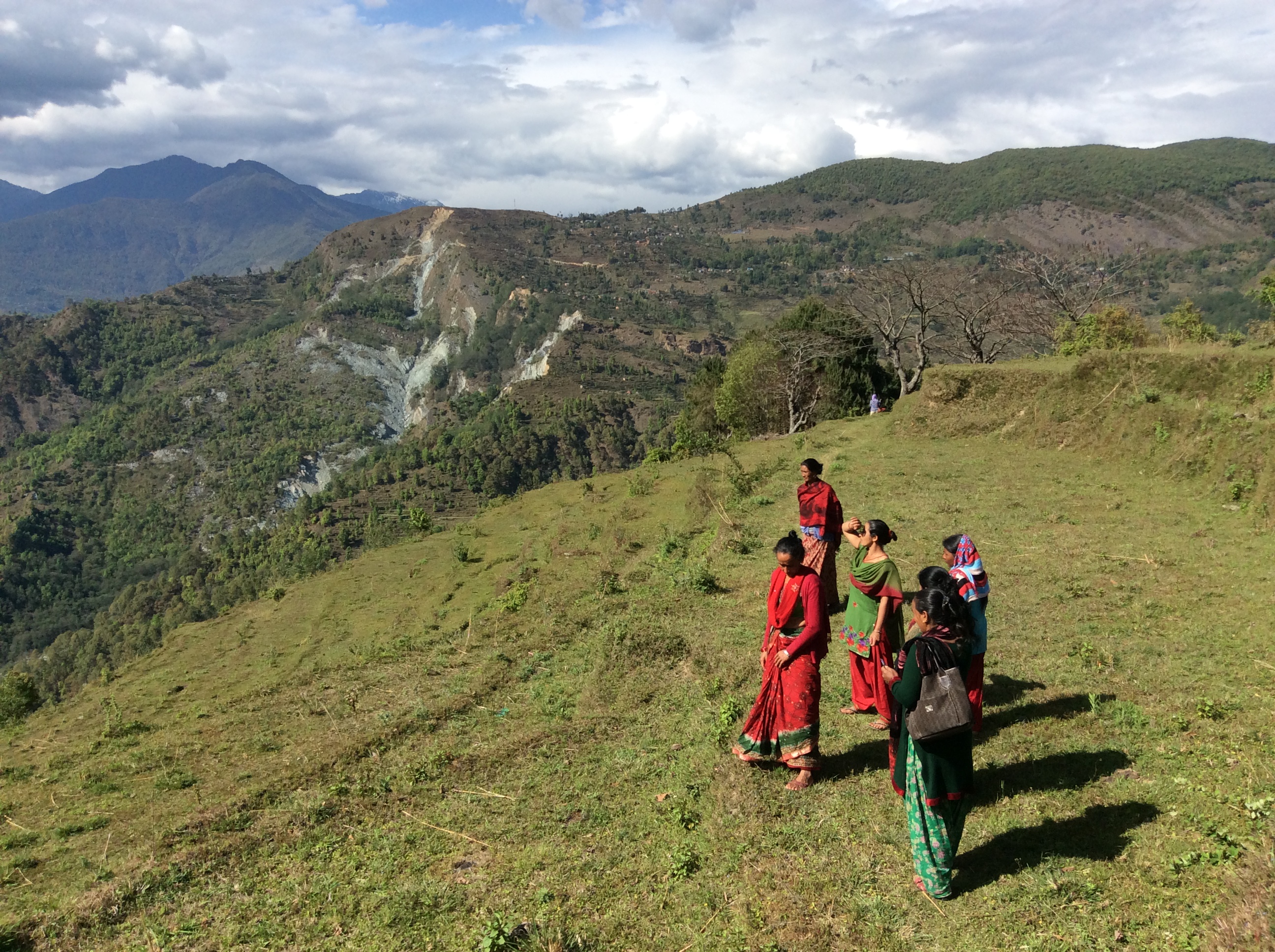

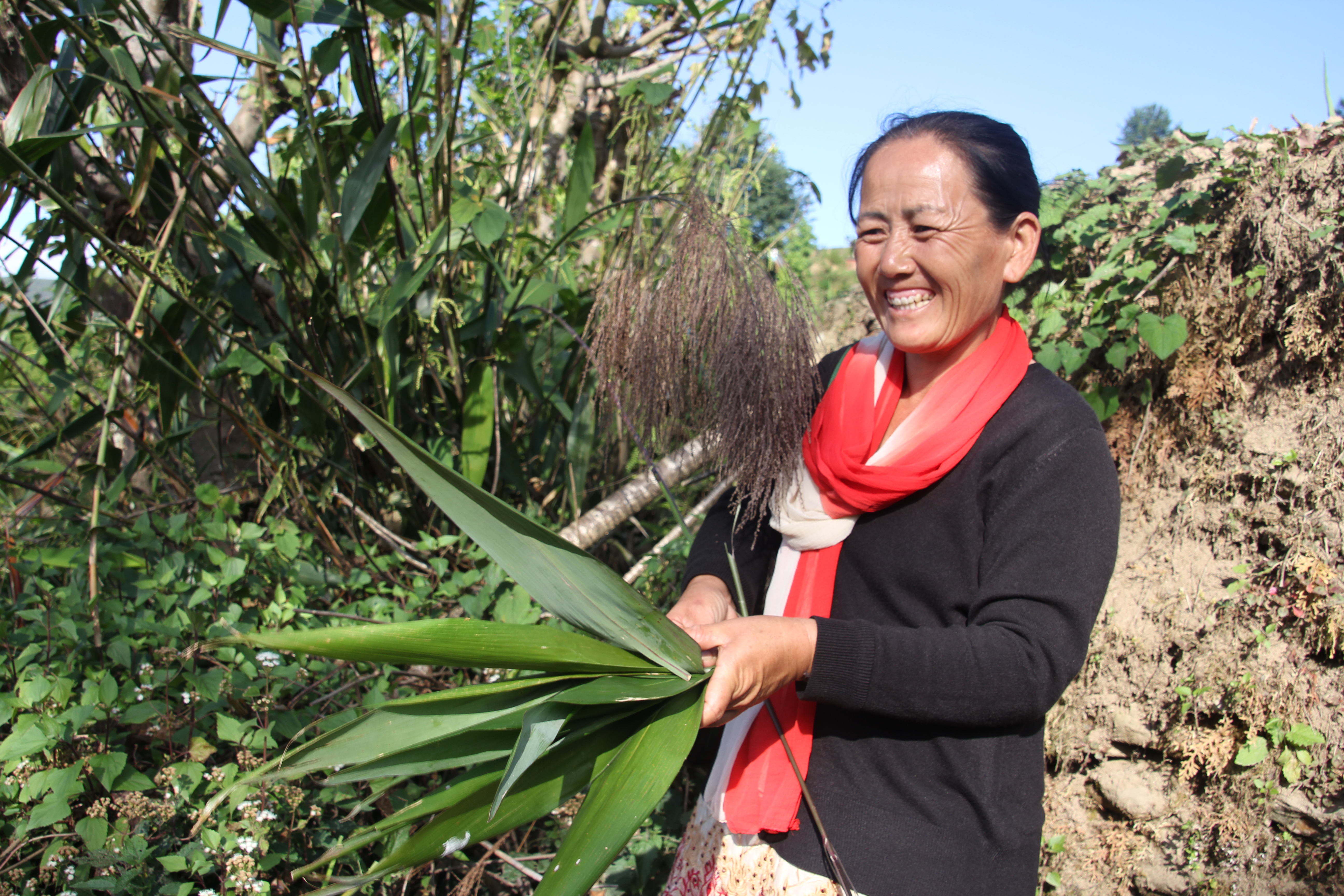
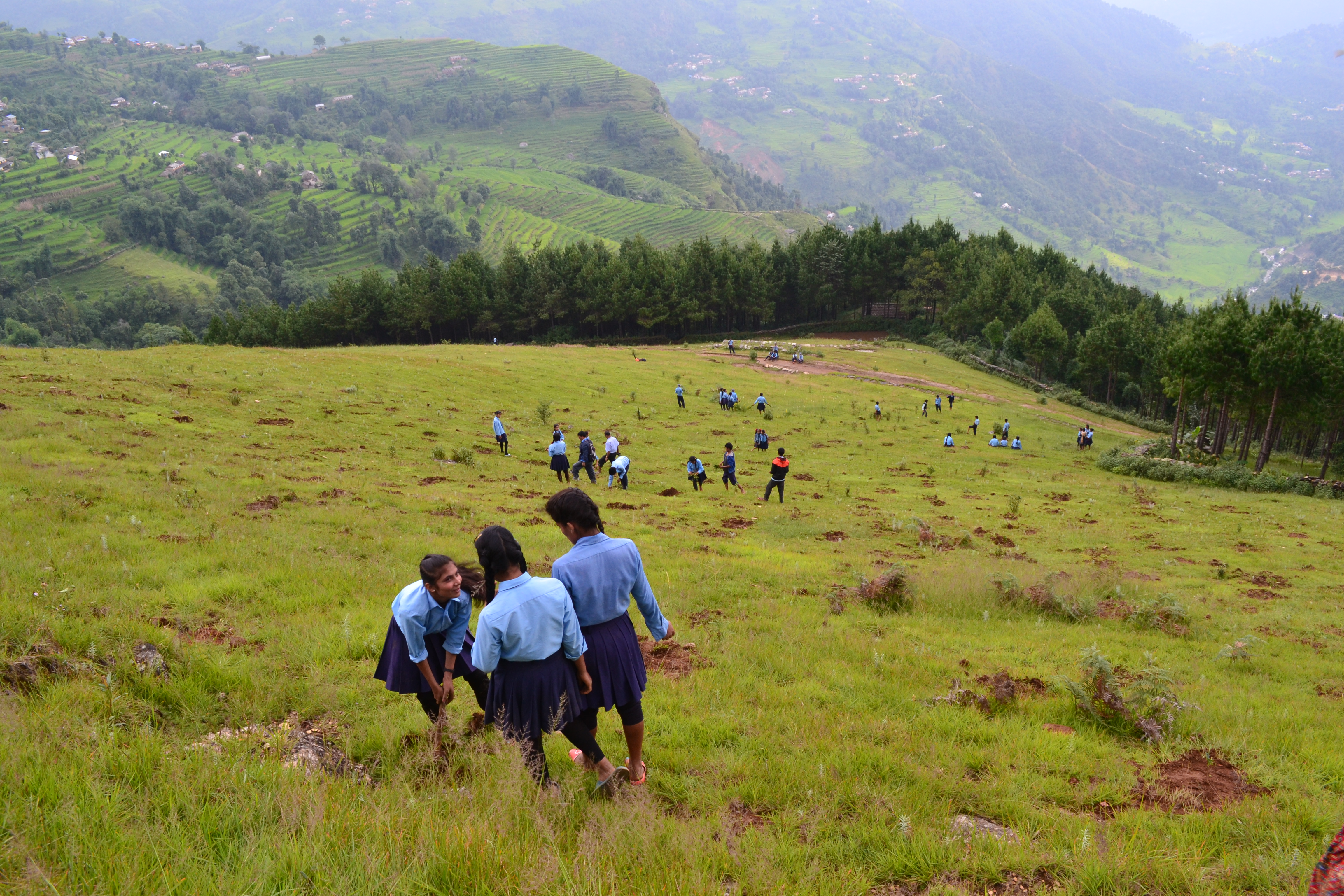
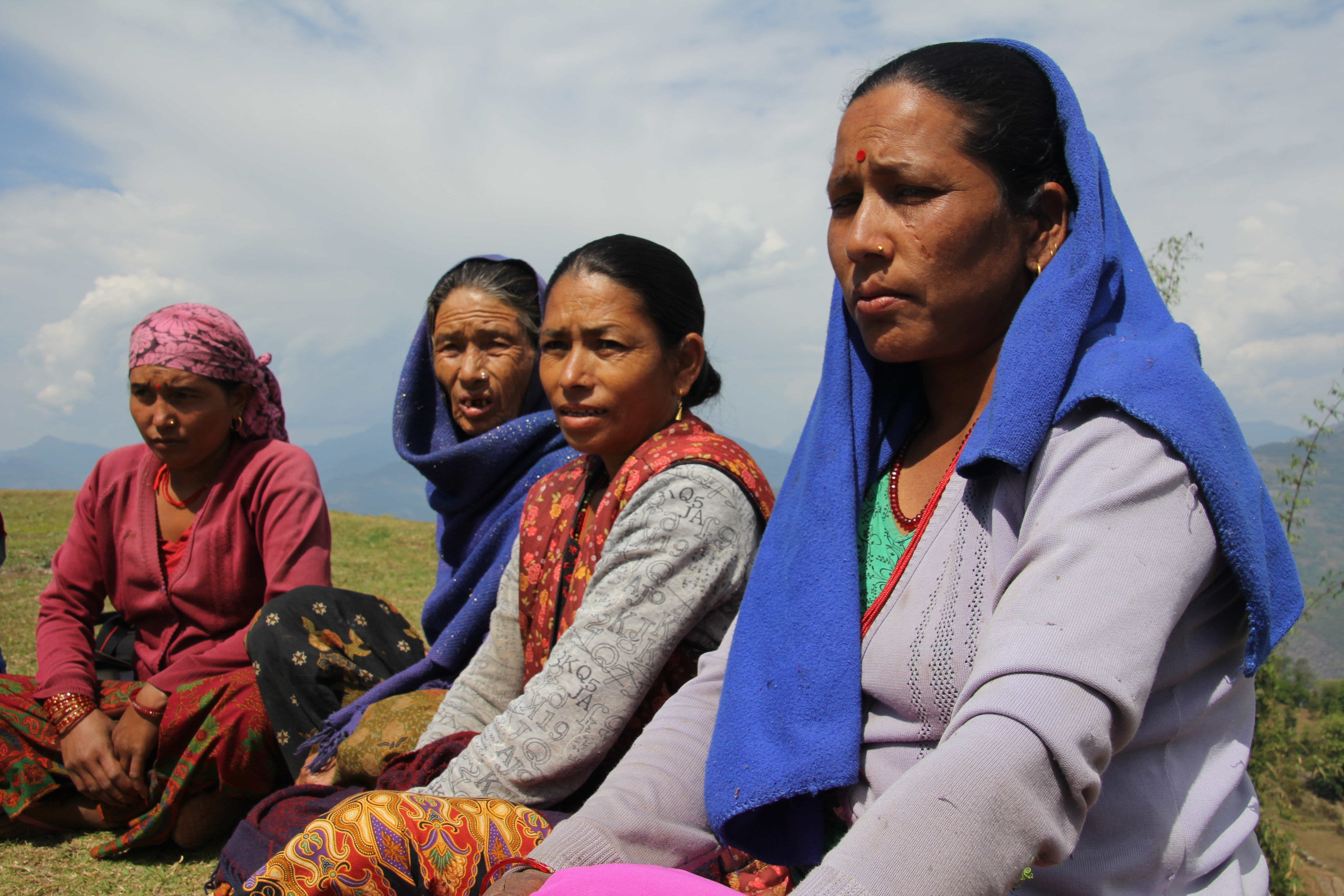
Assessments and Background Documents
Mt EbA Nepal Vulnerability & Impact Assessment of Panchase Region (2015)
Min of Forests and Soil Cons & UNDP Nepal (2014) Mt EbA Baseline & Socio-Econ Survey
Relevant Peer-Reviewed Articles
EbA planning in the Panchase Mountain Ecological Region (2015)
Brochures, Posters, Communications Products
BROCHURE NEPAL Mt EbA Programme 2 (Min of Forests and Soil Cons & UNDP Nepal)
BROCHURE Ecosystem Services (Min of Forests and Soil Cons & UNDP Nepal Mt EbA)
BROCHURE NEPAL Mt EbA Programme (Min of Forests and Soil Cons & UNDP Nepal)
BROCHURE EbA Concept (Min of Forests and Soil Cons & UNDP Nepal Mt EbA)
Project Brief / Fact Sheet
FACT SHEET - Nepal Mt EbA Programme (Min of Forests and Soil Cons & UNDP Nepal)
Case Study
Min of Forests and Soil Cons & UNDP Nepal (2013) - Timur Value Chain Study
Min of Forests and Soil Cons & UNDP Nepal (2013) - Orchid Value Chain Study
Min of Forests and Soil Cons & UNDP Nepal (2013) - Kurilo Value Chain Study
Min of Forests and Soil Cons & UNDP Nepal (2013) - Chiraito Value Chain Study
Min of Forests and Soil Cons & UNDP Nepal (2013) - Allo Value Chain Study
ProDocs
The Nepal Pilot Project of the global Ecosystem-based Adaptation in Mountains Programme aims to enhance capacity of local communities, demonstrate EbA measures for continued provision of ecosystem services, and support in strengthening the institutional capacity of key national Nepalese actors to build and better integrate ecosystem resilience options in national, sub-national and local level plans.
It is working to specifically support 4 outcomes:
- Development of methodologies and tools for EbA decision-making in mountain ecosystems;
- Application of EbA tools and methodologies at the ecosystem level;
- Implementation of EbA pilot initiatives at the ecosystem level; and
- Development of a business case for EbA at the national level.
In Nepal, the Project is implemented by the Department of Forests (DoF) under the Ministry of Forests and Soil Conservation (MoFSC) and is coordinated by the Ministry of Science, Technology and Environment (MoSTE). Similarly, there are three implementing agencies: UNEP, UNDP and IUCN. EbA initiatives are concentrated in 17 VDCs (Village Development Committees) of the ‘Panchase’ region and covers three districts – Kaski, Syangja and Parbat.
Some key accomplishments for the project include:
- The project has prioritized 3 important sub-watersheds – Rati, Saradi and Harpan - and focused on different interventions such as ecosystem restoration, water conservation, land rehabilitation, livelihood diversification and capacity enhancement of government agencies and local communities.
- Practices, like water source conservation and construction of conservation ponds, have been initiated in the pilot sites to address water scarcity issues, since the water sector is significantly affected by climate change in Nepal. These initiatives have helped reduce drudgery in fetching water required for dominant rural livelihood practices, i.e. subsistence agriculture and livestock rearing.
- Out-migration in Panchase has resulted in an increasing amount of abandoned and barren land. The Project has hence carried out plantation initiatives of endemic multi–use species to protect these lands from further degradation and also complement the needs of rural people for fuel wood and fodder. Additionally, the Project has supported nursery establishment in the region to provide easy access to seedlings species for plantations by the locals. Likewise, land degradation resulting from unplanned rural road construction has been addressed by roadside greenery promotion and roadside rehabilitation, using engineered structures such as ‘gabion cages’ that are supplemented by plantations. Similarly, several landslide and gully control initiatives have also been carried out in the project pilot sites.
- Rangeland management has been done by building compound walls to halt over-grazing activities of the livestock and protect the grassland ecosystem from further degradation. The Project has also distributed fodder species to reduce the pressure on the open degraded land.
- Several river bank conservation initiatives with application of grey-green measures, i.e. engineered structures coupled with bamboo plantation, have been carried out to protect agricultural lands in the river banks to reduce deposition of sediment downstream.
- The Harpan Sub-watershed is an important feeder to the nationally important Phewa Lake, which today suffers from massive deposition of silt. The Project has, therefore, carried out a comprehensive study on the siltation process of Harpan Khola and subsequently proposed construction of ecosystem-based siltation control techniques and a siltation dam in the Harpan River.
- The EbA concept has now been mainstreamed in Bachelors of Science (BSc) degree syllabus of the Tribhuvan University, Central Department of Environmental Science (CDES). Similarly, to reduce the research gap, EbA has provided research grants to the students of Tribhuvan University to undertake research work in the EbA site to investigate the effectiveness of EbA options.
- The Project broadcasted radio programs named ‘Panchase ko Serofero’ through Radio barahi-99.2, Radio saligram-100.6 and Syangja FM-89.6, respectively, from Kaski, Parbat and Syangja to increase local level awareness on ecosystems and EbA.
Some policy-related accomplishments include:
- Led by UNDP, the Nepal project has been engaged in the process of establishing the newly formed High-Level Technical Committee on EbA to be led by the Ministry of Forests and Soil Conservation. The main role of the Committee is to coordinate and mainstream ecosystem-based approaches to climate change adaptation into different sectoral plans and programmes. The Committee includes representatives from various Ministries, such as National Planning Commission, Ministry of Forests and Soil Conservation, Ministry of Science, Technology and the Environment, Ministry of Agriculture and Ministry of Federal Affairs and Local Development. The first meeting of the Committee was scheduled for last week of September.
- The results of the Cost-benefit analysis carried out by the Nepal project, led by UNDP, will be presented in a high-level event, organized jointly with the High-level Technical Committee, in October.
- The new Forest Policy (2015) has climate change as one of seven thematic areas and includes EbA as one of the approaches put forward for adaptation. The project, led by UNDP, is involved in a working group developing a 5-yr action plan for the delivery of the climate change area of this Policy in all 75 Districts of Nepal. The project is providing direct technical input into how this key national policy will be implemented in practice with regards to climate change and making the case for integrating EbA measures into its delivery.
- The Nepal project, led by UNDP, has provided technical and financial support to produce draft Guidelines on Protected Forests, which provide regulations and directives on managing Protected Forests and are in the process of being endorsed by Government. The proposed Guidelines incorporate EbA and provide the opportunity for integrating EbA into the national Protection Forest management plans and programmes.
Mountain Ecosystem-based Adaptation in Uganda
Mount Elgon landscape in Uganda is the seventh highest mountain in Africa, a major catchment area and straddles the border between Kenya and Uganda. The climate is cool with a mean annual rainfall of 1,270 mm. The population of Mount Elgon is almost entirely rural and dependent on subsistence agriculture, with approximately 564,000 people living in the 4 districts which make up the project site. The region is home to Mt Elgon National Park and is of great conservation value, but high population density means that agriculture is spreading rapidly.
Through the global Ecosystems-based Adaptation (EbA) in Mountains Programme, UNDP, UNEP and IUCN, with funding from the German Government (BMUB), are using sustainable management, conservation and restoration of ecosystems, as part of an overall EbA adaptation strategy, to reduce the vulnerability and enhance the resilience of select fragile mountain ecosystems and their local communities to climate change impacts. The promoted EbA measures carefully take into account anticipated climate change impacts trends to ensure a forward-looking process.
For more information visit the Global Ecosystems Based Adaptation in Mountains Programme profile, or the EbA Flagship website.

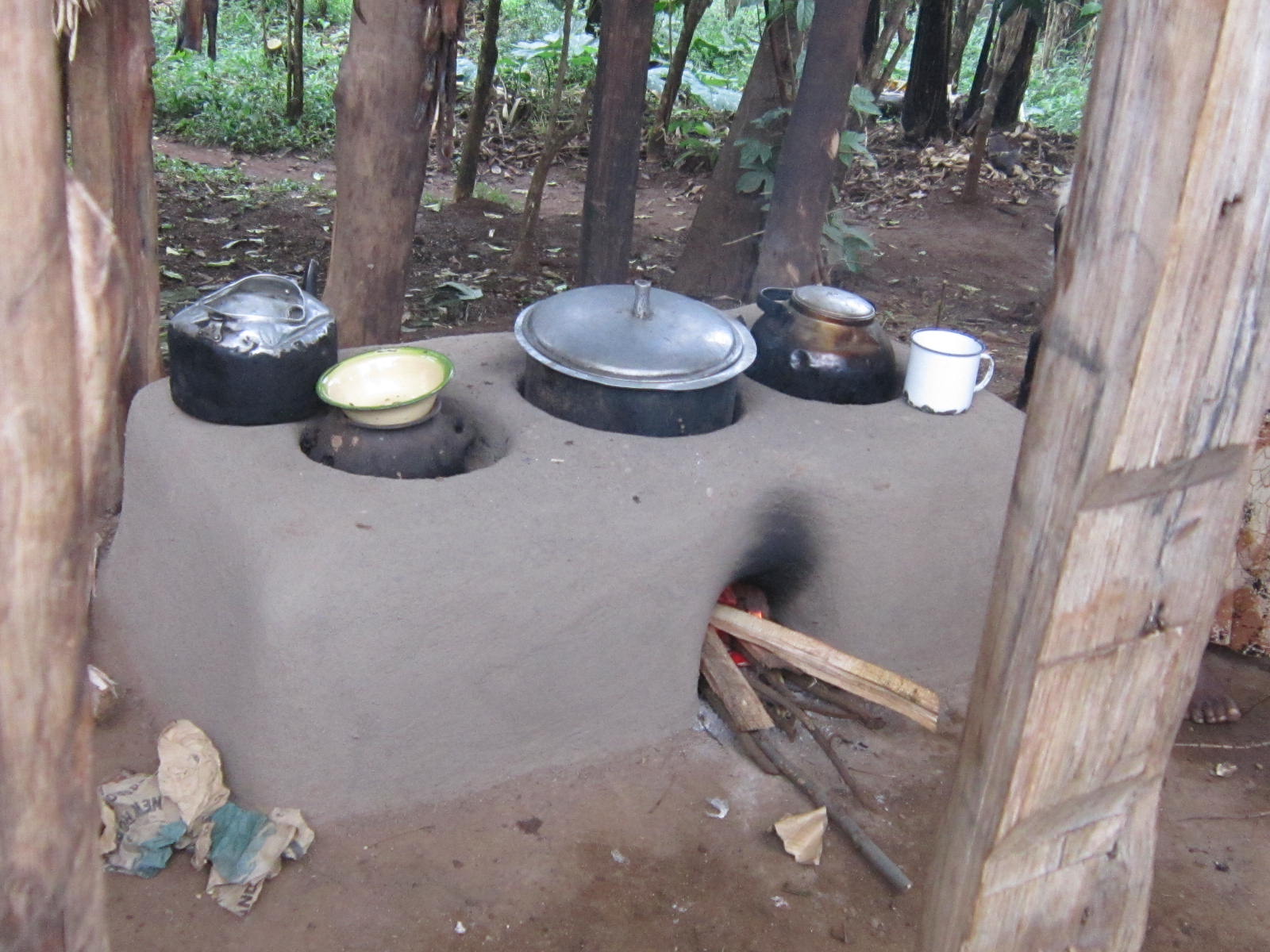
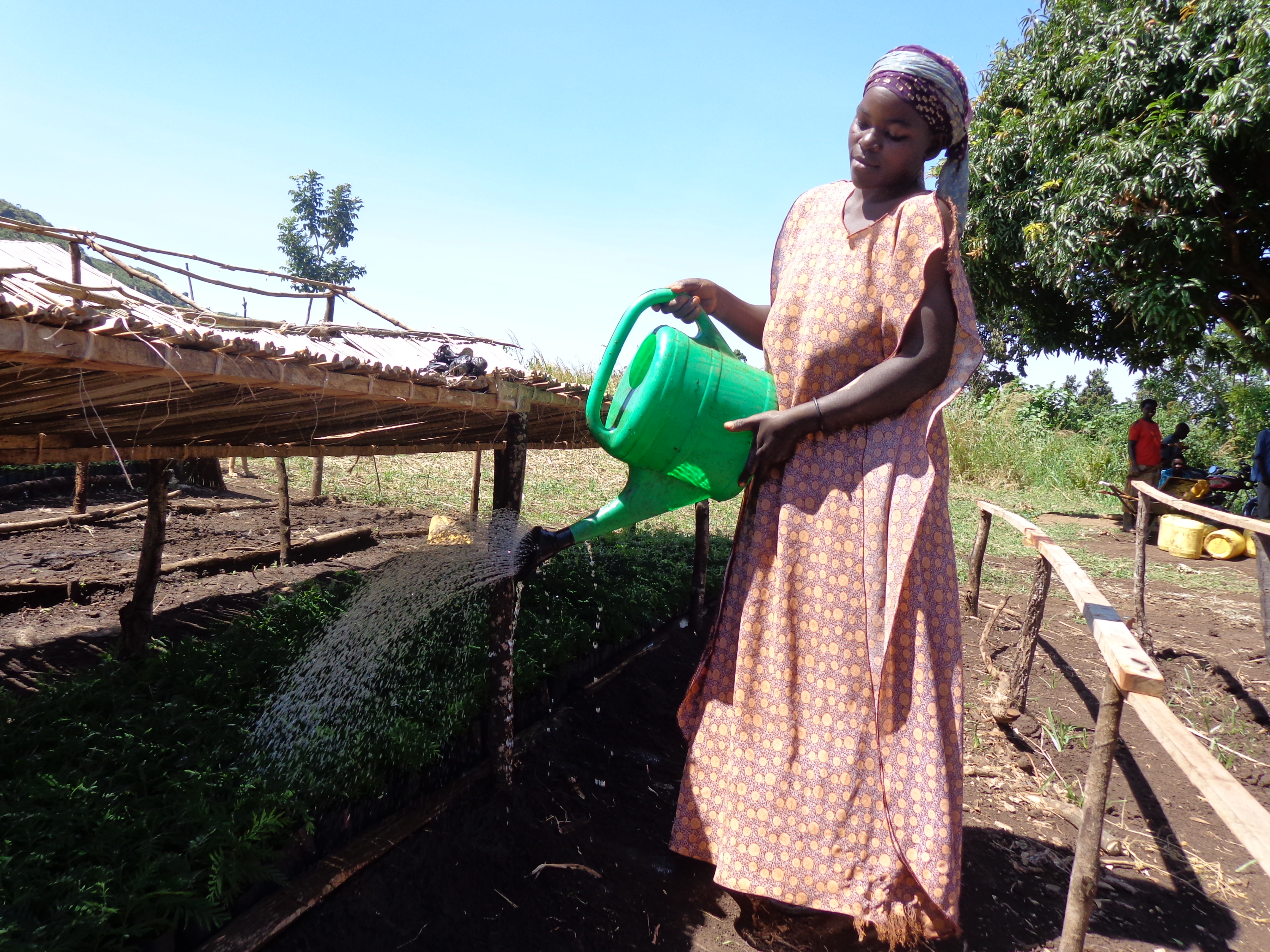
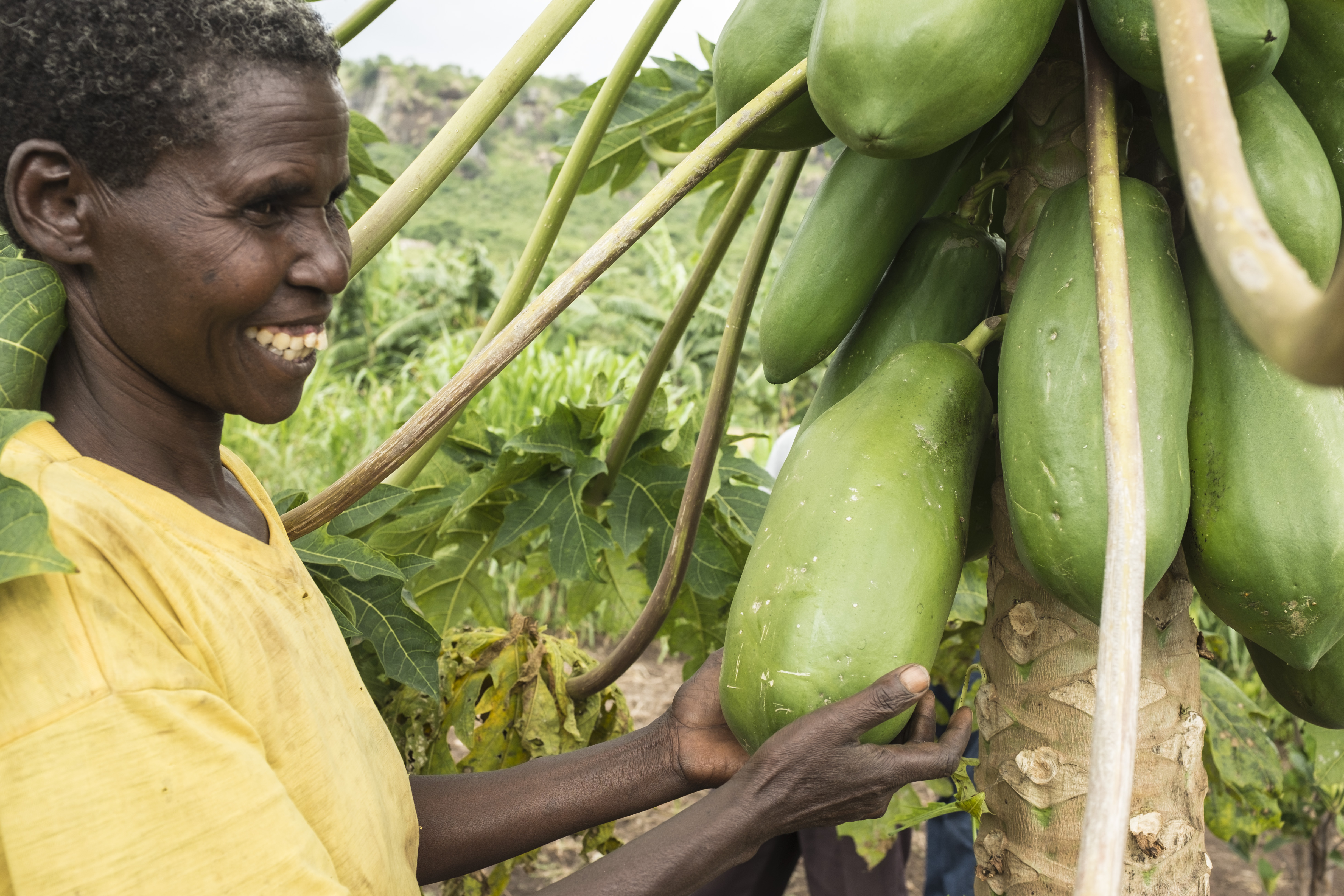
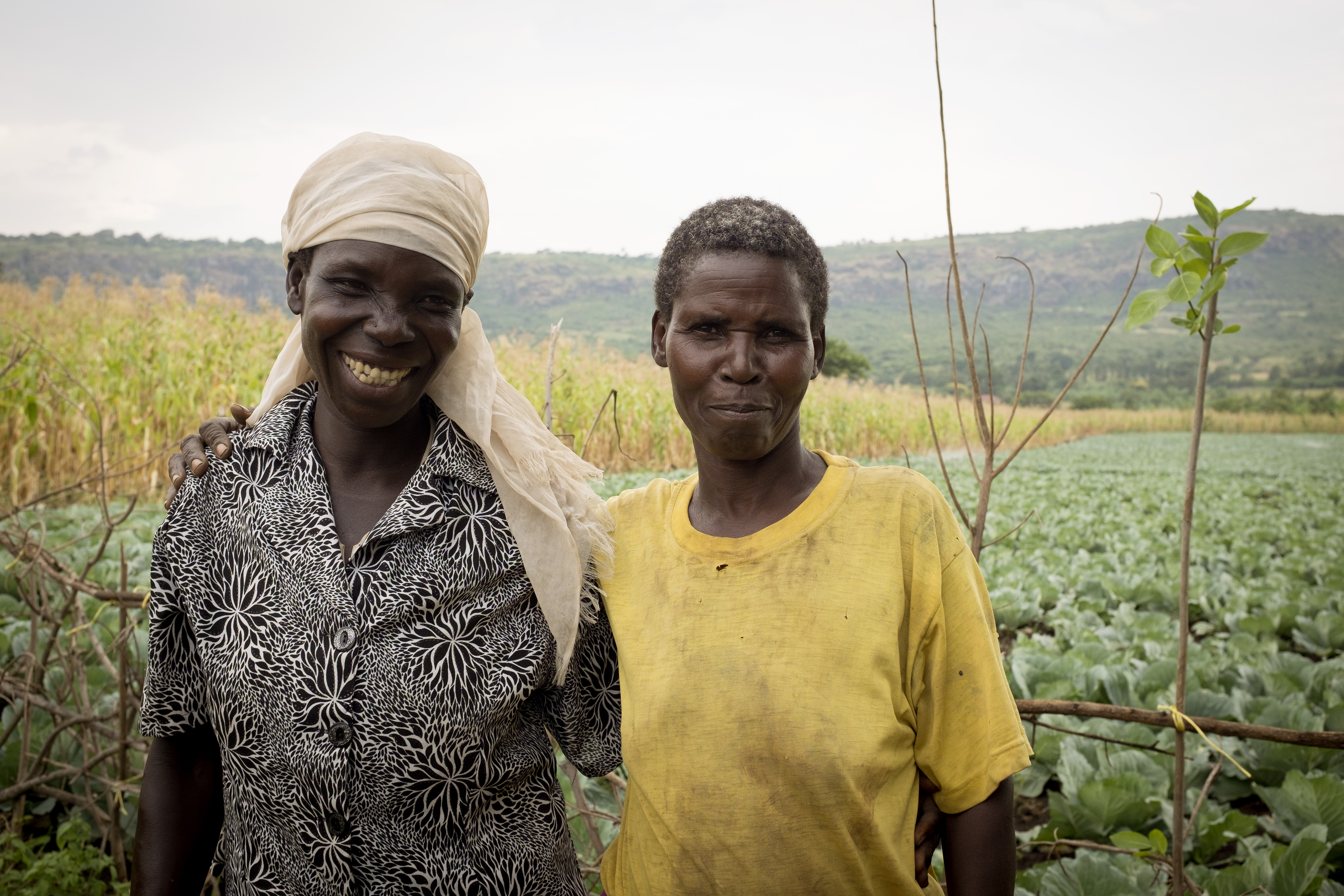
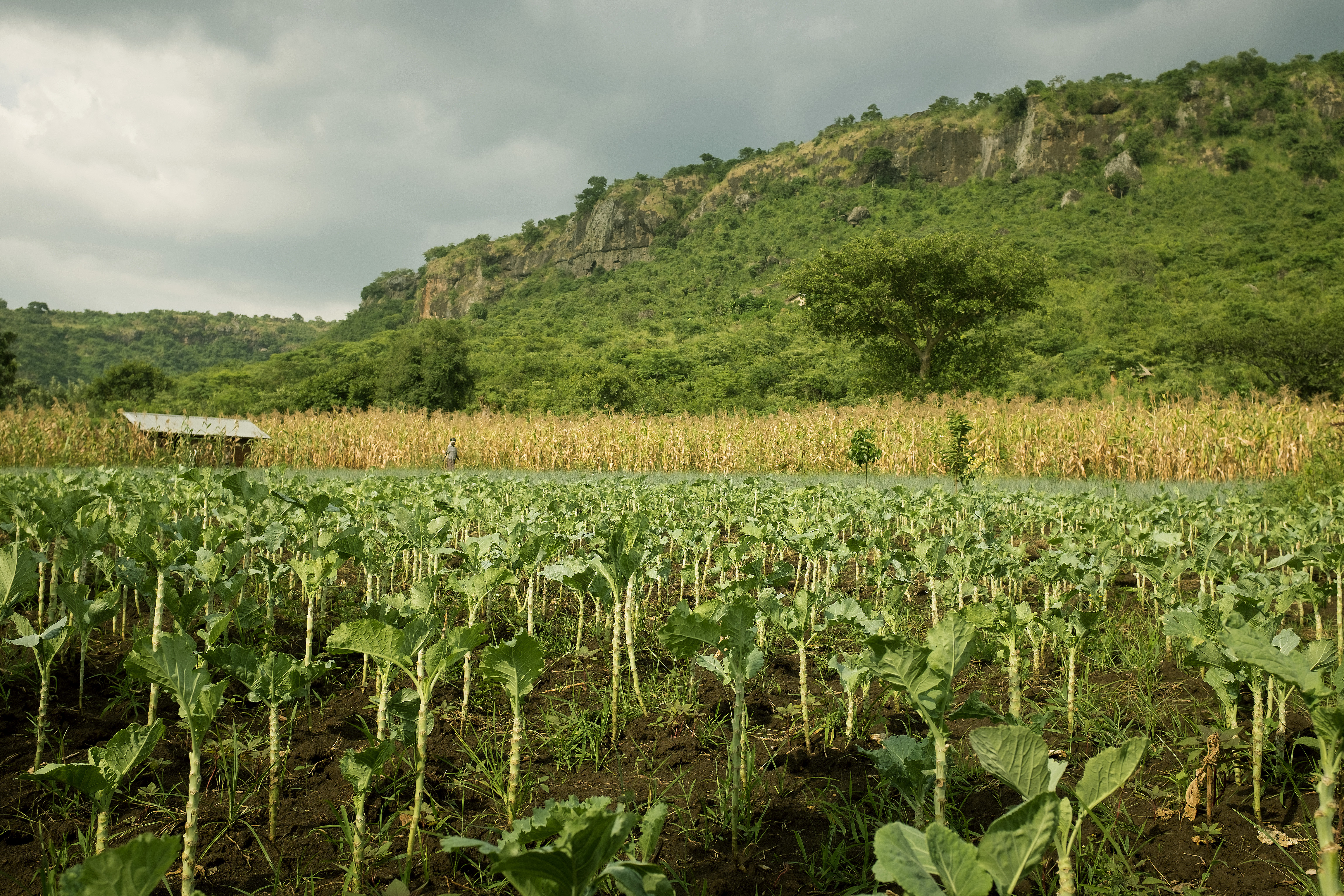
Assessments and Background Documents
UNDP Uganda+UNEP+UNEP-WCMC (2013) Uganda VIA Report POPULAR VS
Min of Water and Envir & UNDP (2012) VIA Capacity Assessment for EbA in Mt Elgon
Min of Water and Envir & UNDP (2012) Baseline info for EbA in Mt Elgon Ecosystem Project Strategy
Brochures, Posters, Communications Products
Min of Water and Envir & UNDP (2014) BROCHURE Uganda Mt EbA pilot project
Communications Products
Min of Water and Envir & UNDP (2014) Uganda Mt EbA Communications Strategy
Training & Tools
Min of Water and Envir & UNDP (2015) Training Manual - Mainstreaming EbA into policy & financing frameworks
Min of Water and Envir & UNDP (2015) Manual for implementing EbA in Mt Elgon Ecosystem of Uganda
Reports and Publications by country teams
Min of Water and Envir & UNDP (2015) Public Policy & Financing Framework for EbA in Mt Elgon POPULAR VS
Min of Water and Envir & UNDP (2015) Public Policy & Financing Framework for EbA in Mt Elgon
UNDP Uganda: Ecosystem Based Adaptation in Uganda
This documentary highlights the need for mainstreaming ecosystem-based adaptation strategies into national policies to ensure that actions against climate change is planned for. It puts a strong emphasis on the importance of Government funding such measures into the future through core budgets.
The objective of this Uganda pilot project under the global Mountain EbA Programme is to reduce the vulnerability of Uganda to climate change impacts through piloting Ecosystem-based Adaptation options with particular emphasis on mountain ecosystems in the Mt Elgon region.
It is working to specifically support 4 outputs:
- The development of decision-making tools for ecosystem-based adaptation for assessing ecosystem resilience,
- Field testing the tools in the pilot countries,
- Making investments in and building capacity for EbA at select demonstration sites, and
- Establishing the economic benefits and financial costs of EbA, to guide national policies.
The project is implemented by the Ministry of Water and Environment (MWE) focusing on the Districts of Sironko and Bulambuli (implementation supported by UNDP) and Kapchorwa and Kween (Implementation supported by IUCN).
Some key accomplishments for the project include:
- A Vulnerability Impact Assessment (VIA) has been carried out to determine which EbA interventions can be used to support the communities in the selected project area.
- About 600 households within the 4 districts (Kween, Kapchorwa, Sironko & Bulambuli) have received training in climate-smart interventions and are implementing them on their land. Local platforms including local radios are being used for knowledge sharing.
- Different techniques in support of climate-resilient agriculture have been encouraged, including mulching, use of organic fertilizer, improved water retention through roadside drainage bunds, run off retention drains, diversion bands in crop gardens; and gravity flow irrigation (benefitting over 1,000 formerly water-stressed community members in 3 villages in Sanzara Parish).
- Practices like soil and water conservation structures, have also been promoted, including contour trenches, contour ridges, retention or check dams, infiltration ditches and contour bands; tree planting for stabilization of soil and water conservation, with appropriate species together with contour grass strips; and the management and protection of existing forests and trees on the farm.
- At the local governance level, structures for natural resource governance have been strengthened, including a schematic framework for managing a new adaptation fund in all the three catchments, including the communities and district technical staff.
- The ECOTRUST PES facility being piloted by the project was officially launched in March 2015 by the Minister of Water and Environment, Hon. Ephraim Kamuntu. The Minister emphasized the contribution of the fund to many of the investment priorities identified in the National Development Plan of Uganda such as skills development, water and sanitation; and facilitating availability and access to critical production inputs especially in agriculture.
- With support from the project, the Ministry of Water and Environment is developing guidelines on how to integrate EbA into national and district level planning and policies. This is a participatory process that has been done through training workshops and provision of tools. A specific training package on implementing EbA in Mt Elgon has also been developed, which provides step to step guidance on planning and implementing EbA aimed as a tool at supporting extension services
- The cost-benefit analysis results and data generated will be used to advocate the case for EbA to government during a meeting of the Top Policy Committee of the Ministry of Water & Environment. This will then be followed up at during the Joint Sector Water & Environment Review (week of 5th Oct) being held by the National Climate Change Policy Committee and the National Environment & Natural Resources Sector Working Group.
 Community Revolving Fund promotes rural enterprise development and environmental protection
Community Revolving Fund promotes rural enterprise development and environmental protection
 Beekeeping saving the environment in Sironko
Beekeeping saving the environment in Sironko
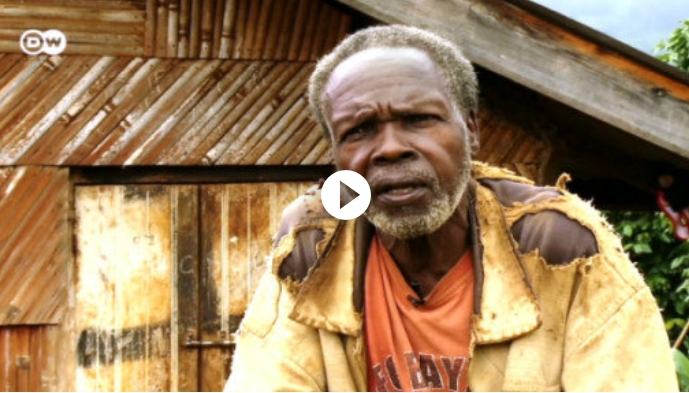 Global Ideas: Uganda – Protecting an Ecosystem
Global Ideas: Uganda – Protecting an Ecosystem
 Our Stories - An environmentally friendly building technology saving trees in Sironko district
Our Stories - An environmentally friendly building technology saving trees in Sironko district
 Articles - Uganda’s first Payment for Environmental Services Fund launched, 27 Mar 2015
Articles - Uganda’s first Payment for Environmental Services Fund launched, 27 Mar 2015
.jpg/_jcr_content/renditions/cq5dam.web.540.390.jpeg) Governance Body for the Mountain EbA Project in Uganda holds its second meeting, 4 Jul 2014
Governance Body for the Mountain EbA Project in Uganda holds its second meeting, 4 Jul 2014
Mountain Ecosystem-based Adaptation in Peru
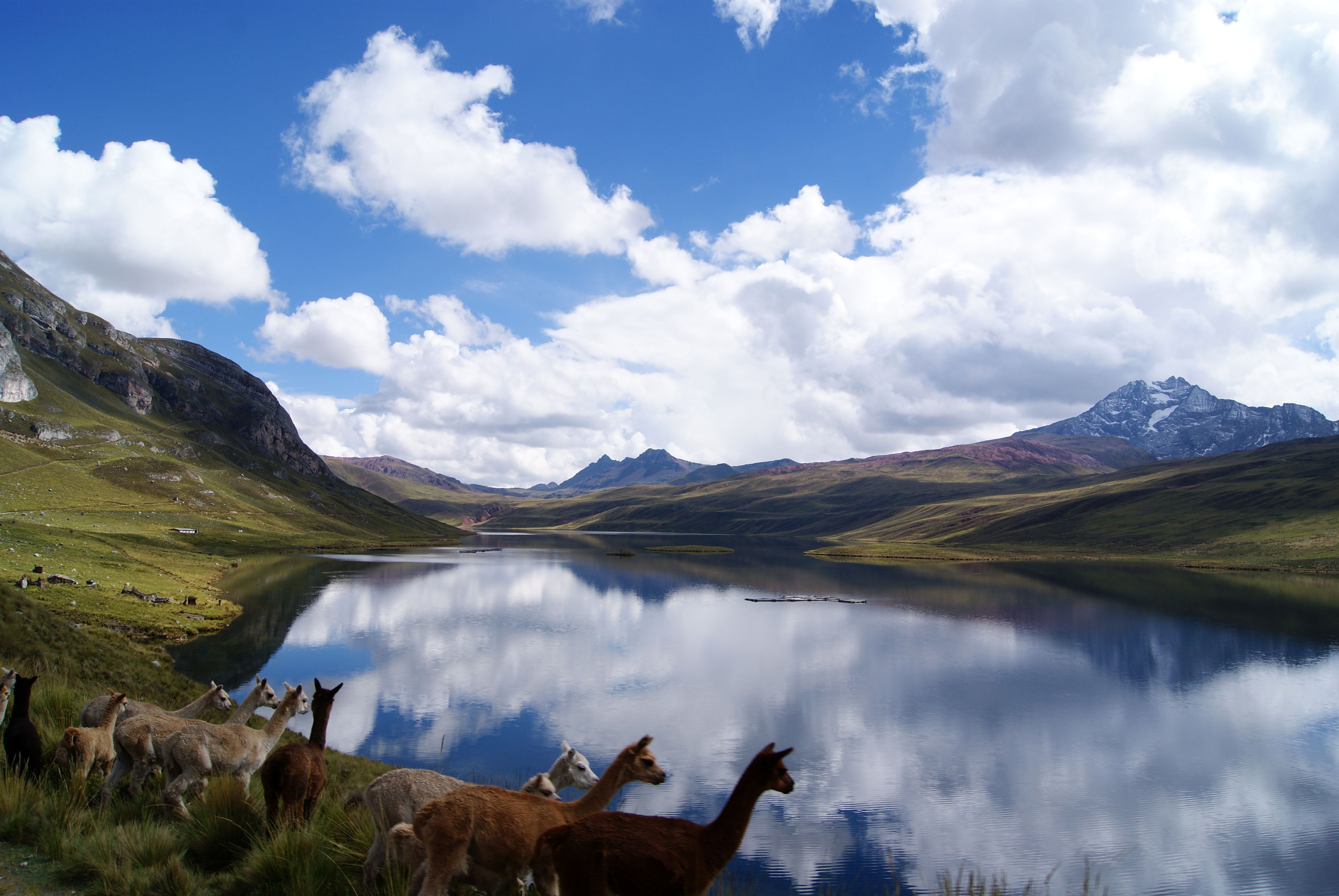
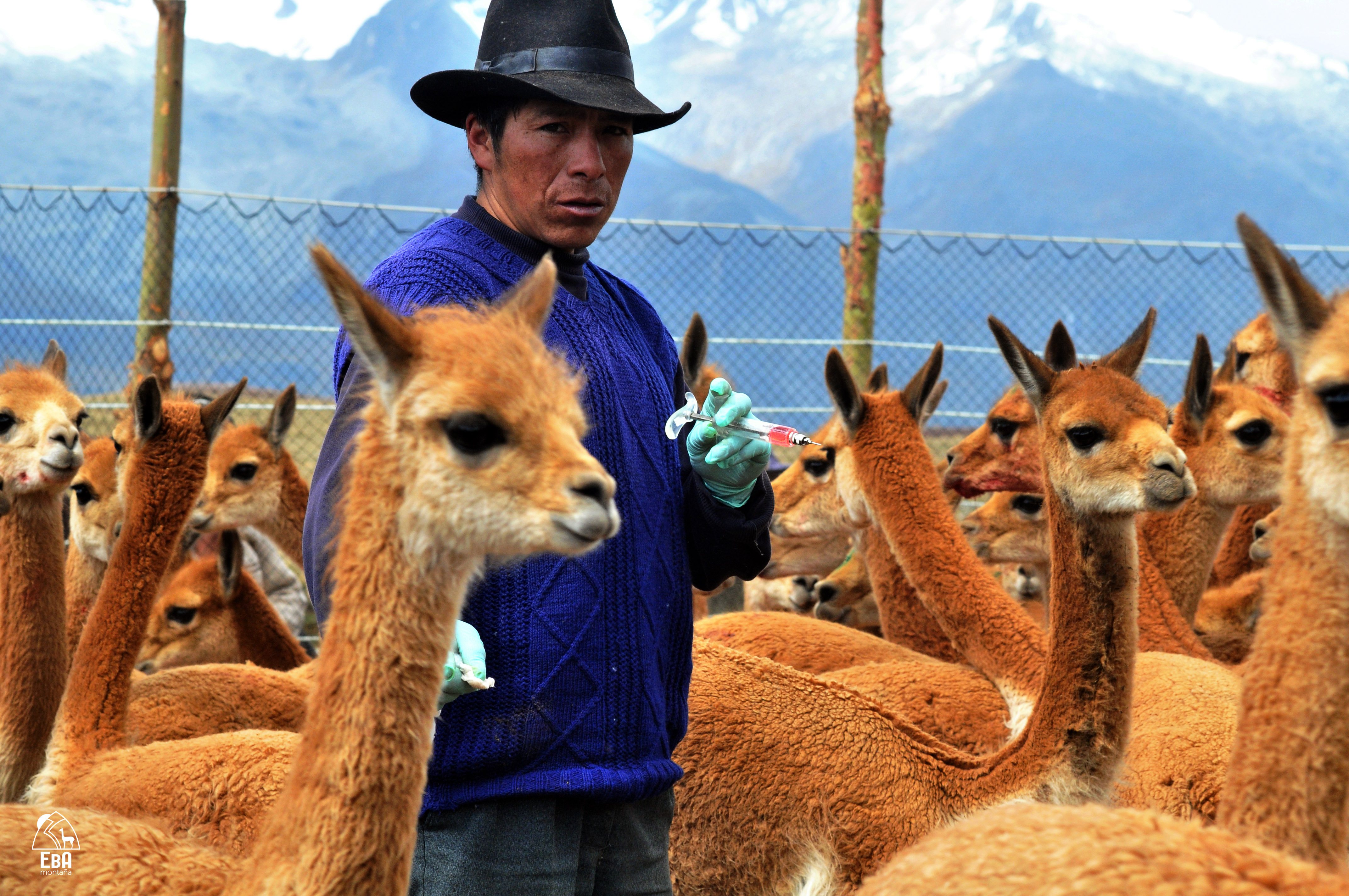
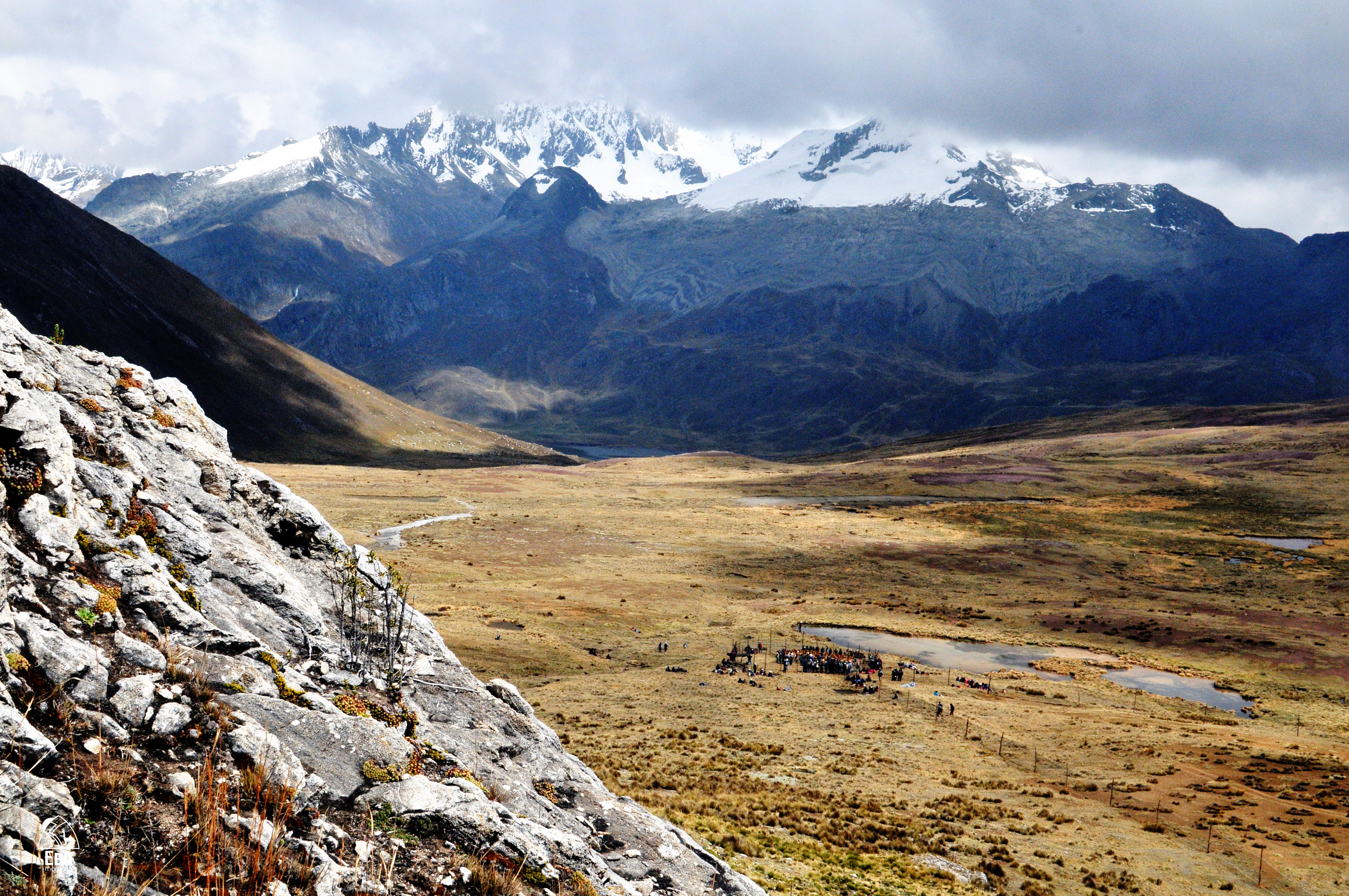
Assessments and Background Documents
'EbA'luacion de la vulnerabilidad al cambio climatico (2015)
Mt EbA Peru Vulnerability & Impact Assessment of RPNYC - Main Study
Mt EbA Peru Vulnerability & Impact Assessment of RPNYC - Context
Mt EbA Peru Vulnerability & Impact Assessment of RPNYC - Future climate scenarios
(2014) Peru Vulnerability and Impact Assessment (VIA) - Technical Summary
Reports
Brochures, Posters, Communications Products
Knowledge Products
Cambio climático en la Reserva Paisajística Nor Yauyos Cochas
El proyecto EbA Montaña trabaja con el SERNANP y las comunidades campesinas de la Reserva Paisajística Nor Yauyos Cochas para que se adapten al cambio climático. Conoce más del proyecto y las medidas de adaptación basada en ecosistemas que vienen implementando en este video.
The objective of this Peru pilot project under the global Ecosystem-based Adaptation (EbA) in Mountains Programme was to reduce the vulnerability of Peru to climate change impacts through piloting EbA options with particular emphasis on mountain ecosystems in the Nor Yauyos-Cochas Landscape Reserve.
It supported four outputs:
- The development of decision making tools for ecosystem based adaptation for assessing ecosystem resilience,
- Field testing the tools in the pilot countries,
- Making investments in and building capacity for EbA at select demonstration sites, and
- Establishing the economic benefits and financial costs of EbA, to guide national policies.
The project is a collaborative initiative of the United Nations Environment Programme (UNEP), the International Union for Conservation of Nature (IUCN) and the United Nations Development Programme (UNDP), funded by Germany’s Federal Ministry for the Environment, Nature Conservation, Building and Nuclear Safety (BMUB). In Peru, the programme is commissioned by the Ministry of Environment of Peru (MINAM for its Spanish acronym) and is implemented in the Nor Yauyos-Cochas Landscape Reserve with the support of the National Service of Natural Protected Areas (SERNANP for its Spanish acronym). The activities under IUCN’s responsibility are implemented in partnership with the Mountain Institute (TMI).
Some key accomplishments for the project include:
- A Vulnerability Impact Assessment (VIA) has been carried out to determine which EbA interventions can be used to support the communities in the selected project area.
- Three vulnerable areas have been identified in the NYCLR: Canchayllo, Miraflores and Tanta. Two EbA measures per area are being implemented.
- Information from the VIA (Vulnerability and Impact Assessment) for the NYCLR is being incorporated into the updated version of the NYCLR Master Plan.
- Support to both regional governments in Junin and Lima in the updating of their Regional Climate Change Strategies and the addition of EbA approaches to these tools.
- A local Communication Network for the NYCLR has been developed by the project. 11 park rangers and 21 students of the NYCLR have learnt about climate change and how to use communication tools for their own development.
- In Tanta, the community decided to free the Moyobamba area (vicuña natural habitat) of domestic animals to be an exclusive area for vicuñas.
- Capacity building and technical assistance in livestock and vicuña management, including animal husbandry of vicuña population.
- Installation of fences in 2000 hectares of communal land for livestock, and conservation of 1500 hectares of vicuña habitat.
- In Miraflores and Canchayllo no regret measures are being implemented. In both places local villagers have become local researchers and have strengthen their capacity in pasture and water management.
- In Canchayllo, a natural water reservoir dam was restored to reduce water filtration and ensure its storage during the dry season. Also, an underground pipe was restored to transport water from the upper part of the watershed (near Chacara Lake) to the community farm (Jutupuqio).
- In Miraflores, a protection zone (5ha) was enlarged around the Yanacancha lakes encircling the upper micro-watershed in order to prevent cattle and other animals from entering the area.
Policy-related accomplishments:
- In August 2015, Peru officially approved Policy Guidelines for Public Investment in Biodiversity and Ecosystems, with the expectation that this instrument will facilitate new and additional public investment aligned with the National Biodiversity Strategy.
- Of particular interest is that the UNDP BIOFIN and the Peru Mountain EbA projects worked together since February 2015 in close coordination with the Ministries of Environment and Economy and Finance to facilitate the incorporation of climate change and specifically EbA into the guidelines. For example, the consideration of climate change as a cross-cutting issue is included as one of the Strategic Policy Guidelines (p6).
- As next steps, BIOFIN and the Peru Mountain EbA project are collaborating in the design of a pilot Public Investment Project for the community of Tomas in the Nor Yauyos Cochas Landscape Reserve, as an opportunity to replicate EbA actions undertaken in Tanta and taking advantage of the political will and support of the Tomas municipality.
- Following this, UNDP and other agencies will support MINAM and MEF in capacity building of local and regional governments and development of additional pilots, as part of an effort to expand the use out the guidelines at the national level. Technical support will also be provided to develop impact indicators to be used by MINAM and MEF of the biodiversity and ecosystem-focused PIPs.
- The Peru Intended Nationally Determined Contribution (INDC) is currently being developed. The project team has contributed by reviewing the draft and providing recommendations on how to integrate EbA. The draft INDC includes EbA measures in its sector/system specific adaptation contributions for water, agriculture and forestry. The INDC even refers to the Mountain EbA Programme specifically as a key project that has contributed to the adaptation process in Peru.
 Learning by doing: the construction of the approach and program EbA, Lunahuana, Cañete, 25 to May 30, 2015 - The third Global technical workshop on ecosystem-based adaptation learning for the Global Mountain EbA programme, which is running in Nepal, Uganda and Peru, was held. The workshop aimed to identify and assess the contributions that the program has made in EbA mainstreaming in public policies and in building resilience and adaptive capacity of local populations.
Learning by doing: the construction of the approach and program EbA, Lunahuana, Cañete, 25 to May 30, 2015 - The third Global technical workshop on ecosystem-based adaptation learning for the Global Mountain EbA programme, which is running in Nepal, Uganda and Peru, was held. The workshop aimed to identify and assess the contributions that the program has made in EbA mainstreaming in public policies and in building resilience and adaptive capacity of local populations.
 CRiSTAL Parques, 26-29 January, 2015 - Del 26 al 29 de enero de 2015 se aplicó, en la Reserva Paisajística Nor Yauyos Cochas (RPNYC) de Perú, la herramienta CRiSTAL Parques, un instrumento de apoyo a la toma de decisiones que ayuda a los profesionales de la conservación y a los responsables de Áreas Protegidas (AP) a integrar riesgos climáticos en su planificación.
CRiSTAL Parques, 26-29 January, 2015 - Del 26 al 29 de enero de 2015 se aplicó, en la Reserva Paisajística Nor Yauyos Cochas (RPNYC) de Perú, la herramienta CRiSTAL Parques, un instrumento de apoyo a la toma de decisiones que ayuda a los profesionales de la conservación y a los responsables de Áreas Protegidas (AP) a integrar riesgos climáticos en su planificación.
 Ruedo en las alturas - El Chaccu, tradición ancestral de arreo de vicuñas, es hoy una importante medida de adaptación al cambio climático basada en ecosistemas.
Ruedo en las alturas - El Chaccu, tradición ancestral de arreo de vicuñas, es hoy una importante medida de adaptación al cambio climático basada en ecosistemas.
 Dioses del agua - Para los pobladores de Canchayllo, distrito de Jauja, en la Reserva Paisajística Nor Yauyos Cochas, el cambio climático ha sido una buena excusa para el ingenio y los buenos reflejos. Ahí se han modificado comportamientos, infraestructura y organización con el fin de potenciar, conservar y restaurar la administración de pastos y agua de la zona. Esta es su historia.
Dioses del agua - Para los pobladores de Canchayllo, distrito de Jauja, en la Reserva Paisajística Nor Yauyos Cochas, el cambio climático ha sido una buena excusa para el ingenio y los buenos reflejos. Ahí se han modificado comportamientos, infraestructura y organización con el fin de potenciar, conservar y restaurar la administración de pastos y agua de la zona. Esta es su historia.
 Viaje por los ecosistemas del Perú, Lima, 7 December 2014 - Junto a un cuentacuentos y pobladores de la costa, sierra y selva del Perú, los proyectos EbA Montaña, EBA Amazonía y Humboldt del Programa de las Naciones Unidas para el Desarrollo (PNUD), presentaron en el Auditorio Principal de la feria Voces por el clima -espacio para la sociedad civil en el marco de la COP20 en Lima-, “Mi montaña, mi bosque, mi mar: nuestro pan de cada día”, una puesta en escena que utilizó la tradición oral para contar cómo las comunidades se están adaptando al cambio climático.
Viaje por los ecosistemas del Perú, Lima, 7 December 2014 - Junto a un cuentacuentos y pobladores de la costa, sierra y selva del Perú, los proyectos EbA Montaña, EBA Amazonía y Humboldt del Programa de las Naciones Unidas para el Desarrollo (PNUD), presentaron en el Auditorio Principal de la feria Voces por el clima -espacio para la sociedad civil en el marco de la COP20 en Lima-, “Mi montaña, mi bosque, mi mar: nuestro pan de cada día”, una puesta en escena que utilizó la tradición oral para contar cómo las comunidades se están adaptando al cambio climático.
 Presentan avances en el Proyecto EbA Montaña, Huancayo, 4 February 2015 - El 4 de febrero en la ciudad de Huancayo, se reunieron los miembros del Comité Directivo del Proyecto EbA Montaña para informar acerca de los avances del proyecto, discutir el Plan Operativo Anual y la presentación de los resultados del estudio de Vulnerabilidad, Impacto y Adaptación al cambio climático (VIA) en la Reserva Paisajística Nor Yauyos Cochas (RPNYC), área de intervención del proyecto, a cargo del equipo de Centro de Datos para la Conservación (CDC)-Universidad Nacional Agraria La Molina y la Universidad de Columbia.
Presentan avances en el Proyecto EbA Montaña, Huancayo, 4 February 2015 - El 4 de febrero en la ciudad de Huancayo, se reunieron los miembros del Comité Directivo del Proyecto EbA Montaña para informar acerca de los avances del proyecto, discutir el Plan Operativo Anual y la presentación de los resultados del estudio de Vulnerabilidad, Impacto y Adaptación al cambio climático (VIA) en la Reserva Paisajística Nor Yauyos Cochas (RPNYC), área de intervención del proyecto, a cargo del equipo de Centro de Datos para la Conservación (CDC)-Universidad Nacional Agraria La Molina y la Universidad de Columbia.
 Proyecto EbA Montaña participa en el Foro Mundial de Montañas en Cusco, 23-25 May 2014 - El Foro Mundial de Montañas (WMF, por sus siglas en inglés) -un espacio de encuentro para la ciencia, los tomadores de decisión y los activistas del Desarrollo Sostenible de las Montañas del mundo- se desarrolló en Cusco, Perú del 23 al 25 de mayo de 2014. El objetivo fue crear un espacio que permita la discusión y el intercambio de experiencias en temas vinculados al cambio climático, agricultura familiar, comunidades y ciudades de montaña, en el marco del trabajo en los ecosistemas de montaña.
Proyecto EbA Montaña participa en el Foro Mundial de Montañas en Cusco, 23-25 May 2014 - El Foro Mundial de Montañas (WMF, por sus siglas en inglés) -un espacio de encuentro para la ciencia, los tomadores de decisión y los activistas del Desarrollo Sostenible de las Montañas del mundo- se desarrolló en Cusco, Perú del 23 al 25 de mayo de 2014. El objetivo fue crear un espacio que permita la discusión y el intercambio de experiencias en temas vinculados al cambio climático, agricultura familiar, comunidades y ciudades de montaña, en el marco del trabajo en los ecosistemas de montaña.
 EbA Montaña en Perú identifica vulnerabilidad e impacto frente al cambio climático de la RPNYC, 26 March 2014, se presentó en la Universidad Nacional Agraria La Molina (UNALM) la Evaluación de Vulnerabilidad e Impacto (EVI) frente al cambio climático de la Reserva Paisajística Nor Yauyos Cochas, el cual forma parte del proyecto Adaptación basada en Ecosistemas de Montaña (EbA Montaña) en Perú. Fue preparado entre agosto de 2012 y diciembre de 2013 gracia a un acuerdo entre el Programa de las Naciones Unidas para el Medio Ambiente (PNUMA) y la Fundación para el Desarrollo Agrario (FDA) de la UNALM.
EbA Montaña en Perú identifica vulnerabilidad e impacto frente al cambio climático de la RPNYC, 26 March 2014, se presentó en la Universidad Nacional Agraria La Molina (UNALM) la Evaluación de Vulnerabilidad e Impacto (EVI) frente al cambio climático de la Reserva Paisajística Nor Yauyos Cochas, el cual forma parte del proyecto Adaptación basada en Ecosistemas de Montaña (EbA Montaña) en Perú. Fue preparado entre agosto de 2012 y diciembre de 2013 gracia a un acuerdo entre el Programa de las Naciones Unidas para el Medio Ambiente (PNUMA) y la Fundación para el Desarrollo Agrario (FDA) de la UNALM.
Building Adaptive Capacity and Resilience of Women and Children in the Democratic Republic of the Congo
Climate change and its effects on rainfall patterns and temperatures are exacerbating the vulnerability of rural communities in the Democratic Republic of the Congo. Women in particular, who represent 60% of agricultural labourers and 73% of farmers, and produce 80% of food crops for household consumption, are at risk. Several dynamics make their adaptation more difficult such as lack of access to formal education, economic poverty, food insecurity, limited access to resources, etc. These inequalities increase women’s vulnerability to harmful climate change impacts while limiting their options for coping and adaptation.
The GEF-LDCF funded project, Building Adaptive Capacity and Resilience of Women and Children in the Democratic Republic of the Congo, seeks to support women and children through a community-centred approach to adopt and adapt livelihood strategies in innovative ways based on current and future climate changes scenarios.

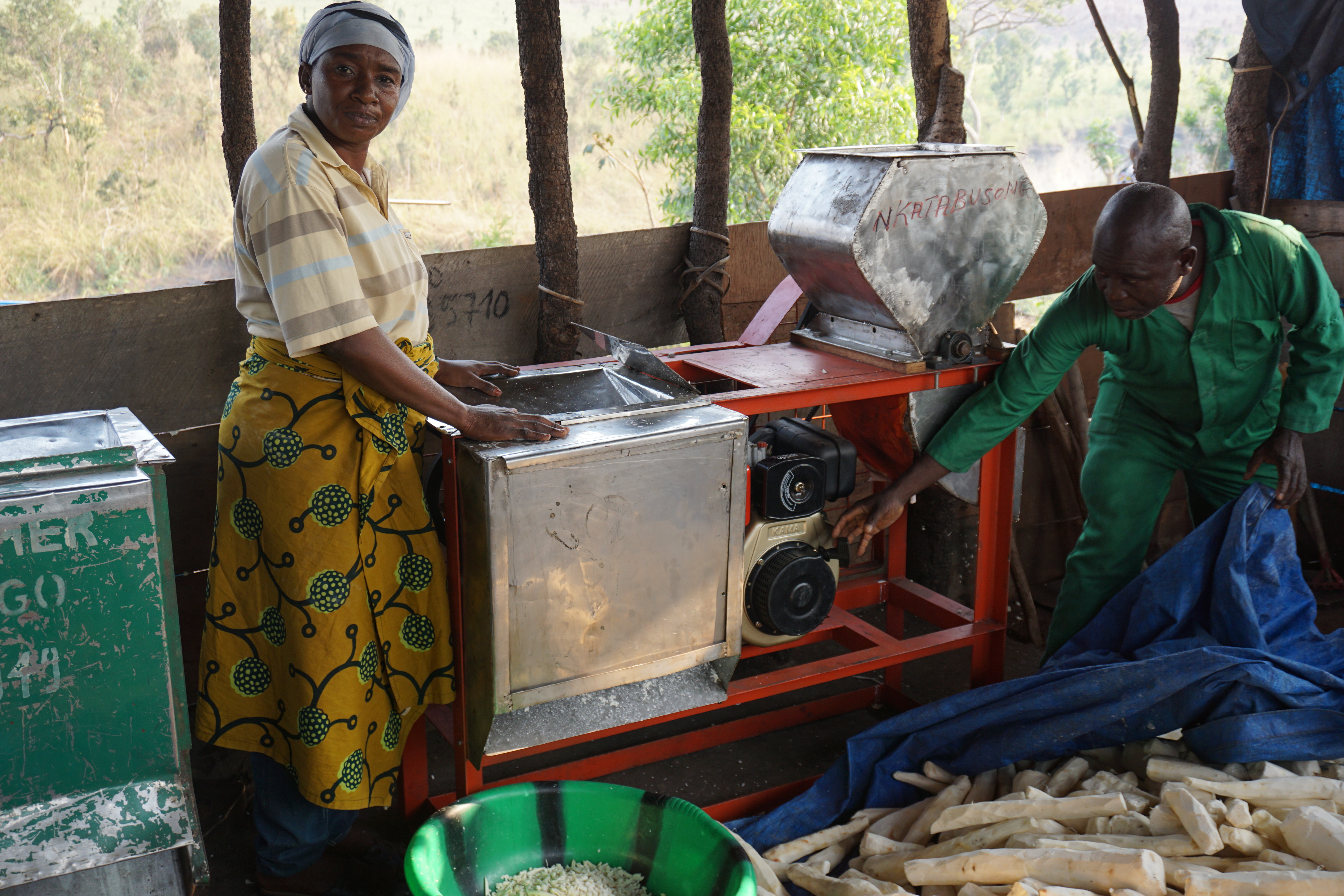
PIFs
Democratic Republic of the Congo – LDCF Project on resilience of Women and Children Project Identification Form
More Information to come...
The project has two main components with the following outcomes –
- Climate resilient diversification practices to secure communities livelihoods including the development of profitable climate resilient alternative livelihoods involving aquaculture, livestock and agriculture products by women groups to increase sources of revenue and improve family nutrition (Outcome 1.1); Installation of at least 200 unsophisticated food processing units (oil presses, presses and grated cassava, husking machines and millers, etc.) and fish conservation units by women's groups (Outcome 1.2); Production and distribution of certified adapted varieties of at least 400 seeds multipliers through support of 50 women groups (Outcome 1.3); Provision of 4 automated agro-meteorological stations and 400 rain-gauge for tailored agro-meteorological information (Outcome 1.4) and; Installation of small scale water saving technologies and distribution systems in high climate risks zone (Outcome 1.5)
- Development of key capacities for undertaking climate resilient activities including training and engagement of women's groups in food processing, processing technology, maintenance of units, rural finance, marketing and organization strategies (Outcome 2.1); Engagement of women’s groups in adapted seeds production and diversification, soil fertility and water management activities (Outcome 2.2); Extending support to nearly 10 rural radio stations and 100 community volunteers as well as producers and staffs from extension services to analyse, interpret, produce and disseminate climate and weather information (Outcome 2.3) and; Establishment of community learning mechanisms through website, technical papers, video, technical forums, and other relevant media/social networks (Outcome 2.4).
More Information to come...
More Information to come...

Marshall Islands' Second National Communication
The creation of a National Communication offers countries the opportunity to contribute with technically sound studies and information that can be used for designing mitigation and adaptation measures, and project proposals that can and will help increase their resilience to the impacts of climate change. Activities generally include: V&A assessments, GHG inventory preparation, Mitigation Analysis or Education, and awareness raising activities. The ultimate goal is the integration of climate change considerations into relevant social, economic and environmental policies and actions.

Overall, the most appropriate and effective adaptation measures and strategies are most likely to be those that will be beneficial even in the absence of climate and sea-level change. Such measures and strategies could be considered as “no regrets” adaptation options. Therefore, in the first instance, the capacity of the Marshall Islands to adapt to the effects of climate and sea-level change will largely be determined by its ability to address on-going environmental, social and economic problems. Adaptation includes three main types of activities. First, there are adaptive actions that include activities targeted at specific sectors where climate change effects have been identified. Second, another group of adaptive measures are equally important and include general policies and actions by government to address some of the social driving forces of environmental problems which will heighten vulnerability to climate change effects. Third, it is also important to increase the capabilities of the Marshall Islands to effectively implement adaptations.
The Republic of the Marshall Islands (RMI) are located off the northeast coast of New Zealand, scattered in an archipelago consisting of two roughly parallel island chains. There are twenty nine atolls and five reefs without lagoons which are made up of about 1,225 islands and 870 reef systems. Twenty-two of the atolls and four of the islands are inhabited. The atolls extend about 700 miles (1130km) north to south, and about 800 miles (1290km) east to west. While some of the islands are several kilometers long they rarely exceed a few hundred meters in width and are often considerably narrower. Land elevations are very low, with a mean height above sea level of only two meters (7 feet). The combination of small land areas and low land elevations contributes to the ecological vulnerability in the Republic. There is concern that any change in sea-level could seriously upset the fragile balance between the land and the sea. The RMI consist of fragments of Islands or low Lying Atoll Courtesy of MIVA. Isolated by ocean, the Republic is more than 2,000 miles (3230km) from the nearest trading centers, Honolulu and Tokyo. Geographically, the RMI’s nearest neighbors are Kiribati to the south and the Federated States of Micronesia to the west. The Republic’s Exclusive Economic Zone (EEZ) encompasses over 750,000 square miles (1.2 million sq km) of the Central Pacific. Subsistence agriculture and fishing are the country’s main industry; the tourism industry makes a noteworthy contribution along with development funds from the United States.
- Institutional strengthening, such as by ensuring that governmental departments are adequately structured and equipped with appropriate skills and tools, and are capable of delivering an integrated response to the challenges arising from climate change and accelerated sea level rise.
- Project management and operational training for all stakeholders involved in climate change programs and the implementation of adaptation projects.
- Accurate documentation of baseline conditions from which to measure climate induced changes to the shorelines, reef and island ecosystem and affected settlements and communities.
- Research capacity needs to be strengthened by ensuring adequate support at the professional and technical levels, and by providing financial support for baseline bio-physical and socioeconomic environmental research, monitoring changes to environmental conditions and implementing adaptation measures.
- Appropriate systems are needed for spatial and other data generated through vulnerability assessments, monitoring programs,
integrated coastal zone management planning and the implementation of adaptation projects.
-
Confidence and capacity building programs are needed for government departments, members of local councils and nongovernment organizations.
-
Community awareness and education programs.
-
Proactive participation in international forums and meetings are needed with the aim of continuing to keep the issues confronting small island states, when they are responding to climate change.
- Land Use and Planning: amendment of land use planning policies to include adaptations to climate change.
- Environment and Natural Resources: amendment of environmental and natural policies to include adaptations to climate change.
- Natural Hazard Management: amendment of natural hazard management policies to include adaptations to climate change.
- Administration and Management: initiation of administrative arrangements and management policies to deal with the core sectoral concerns in terms of water resources, coastal resources, agricultural resources, marine resources and human health.
- Human Health: Development of a comprehensive suite of human health policies to address water borne diseases and other sicknesses that are related to climate-induced change.
- Solid and Liquid Waste Management: Provide broad management policies for domestic solid waste and discharges of liquid effluent including consideration of a strategy to convert solid domestic and some industrial wastes to saleable energy.
- Foreign Affairs: Enhancement of foreign policy frameworks.
- Center of Excellence: establish a Centre of Excellence to expand the role of the Marshall Islands in the international as well as national issues of climate change.
- Technology Exchange: technology exchange policies to address applied research and monitoring (information management).
More recently Marshall Islands developed the RMI Climate Change Roadmap 2010 as a national framework for their climate change and sustainable development efforts. With respect to adaptation, actions identified by the Marshall Islands Government included: the implementation of a Micronesia Challenge and Reimaanlok Action Plan; planning and interventions to address vulnerability in food security, public health and other social development areas; and protection and maintenance of key infrastructure and resources through planning and inter-agency coordination (FSF, 2010).
Current Adaptation Action
- Dohan, Rosemary; Hove, Hilary; Echeverría, Daniella; Hammill, Anne, Parry, Jo-Ellen. (2011) “Review of Current and Planned Adaptation Action: The Pacific.” Adaptation Partnership/International Institute for Sustainable Development, pp.82 - 88.
- Central Intelligence Agency [CIA] (2011). The World Factbook: Marshall Islands. Retrieved from https://www.cia.gov/library/publications/the-world-factbook/geos/rm.html
- Environmental Protection Agency [EPA] (2000). Marshall Islands. Initial Communication under the United Nations Framework Convention on Climate Change. Retrieved from http://unfccc.int/essential_background/library/items/3599.php?rec=j&priref=3433#beg
- Fast Start Finance [FSF] (2011). Marshall Islands. Retrieved from http://www.faststartfinance.org/recipient_country/marshall-islands
- Plume, H. (2002). Pacific Islands Climate Change Assistance Programme (PICCAP): New Zealand’s involvement. Presentation made to the UNFCCC CGE Workshop, 8 to 10 August 2002. Retrieved from http://unfccc.int/files/meetings/workshops/other_meetings/application/pdf/new_zealand.pdf
- Sustainable development and the integration of climate change concerns into medium- and long-term planning
- Inventories of anthropogenic emissions by sources and removals by sinks of greenhouse gases
- Measures contributing to addressing climate change
- Research and systematic observation
- Climate change impacts, adaptation measures and response strategies
- Education, training and public awareness
Potential Adaptation Measures:
Agriculture and Food Security
- Switch to different cultivars
- Develop new crops
Water Resources
- Increase water supply, e.g. by using groundwater, building reservoirs, improving or stabilizing watershed management, desalination
- Decrease water demands, e.g. by increasing efficiency, reducing water losses, water recycling, changing irrigation practices
Coastal Zones and Marine Ecosystems
- Develop planning/new investment requirements
- Protect, including building sea walls, and beach nourishment
In 1992, countries joined an international treaty, the United Nations Framework Convention on Climate Change, to cooperatively consider what they could do to limit average global temperature increases and the resulting climate change, and to cope with whatever impacts were, by then, inevitable.
Parties to the Convention must submit national reports on implementation of the Convention to the Conference of the Parties (COP). The required contents of national communications and the timetable for their submission are different for Annex I and non-Annex I Parties. This is in accordance with the principle of "common but differentiated responsibilities" enshrined in the Convention.
The core elements of the national communications for both Annex I and non-Annex I Parties are information on emissions and removals of greenhouse gases (GHGs) and details of the activities a Party has undertaken to implement the Convention. National communications usually contain information on national circumstances, vulnerability assessment, financial resources and transfer of technology, and education, training and public awareness.
Since 1994, governments have invested significant time and resources in the preparation, collection and validation of data on GHG emissions, and the COP has made determined efforts to improve the quality and consistency of the data, which are ensured by established guidelines for reporting. Non-Annex I Parties receive financial and technical assistance in preparing their national communications, facilitated by the UNFCCC secretariat.
Lao PDR's Second National Communication
The creation of a National Communication offers countries the opportunity to contribute with technically sound studies and information that can be used for designing mitigation and adaptation measures, and project proposals that can and will help increase their resilience to the impacts of climate change. Activities generally include: V&A assessments, GHG inventory preparation, mitigation analysis or education, and awareness-raising activities. The ultimate goal is the integration of climate change considerations into relevant social, economic and environmental policies and actions.
Lao PDR faces significant threats from climate change, in part because 75 per cent of its population depends on natural resources for their livelihood. The government has expressed concern regarding the impacts of climate change on flooding and rainfall patterns, which are said to be increasing and becoming erratic.
Floods and droughts historically have significantly impacted Lao PDR’s agriculture, forestry, water resources, health and economic growth. As such, these sectors have also been identified as priority areas for adaptation. Additional concerns are: a lack of capacity and knowledge with respect to climate modeling; a lack of scientific data on climate effects and potential impacts; low levels of public awareness; and a weak institutional setup that acts as a barrier to adaptation. Financial and capacity constraints are highlighted as major barriers to climate change action.

Lao People's Democratic Republic is located in the Indochina Peninsular (Mekong Region), bordered by China to the North, Vietnam to the East, Cambodia to the South, and Thailand and Myanmar (Burma) to the West and Northwest respectively with population of just over 6.4 million (CIA, 2011). Lao PDR had a ranking of 122 of 169 on the human development index in 2010 (UNDP, 2010), putting it near the bottom of the list of countries that have achieved a medium level of human development. The country’s per capital annual income in 2010 was approximately US$986 (USDS, 2010). The country’s economy is highly dependent on agriculture, representing 30 per cent of GDP and employing approximately 75 per cent of the country’s population.
The country’s climate is tropical and monsoonal, characterized by a rainy season from May to November and a dry season from November to April (USDS, 2010). In order to adapt to climate change a few projects based on assessed priority levels are in place including the project to strengthen the capacity if the national disaster management committees and the project to strengthen capacity of village forestry volunteers in forest planting, caring and management techniques as well as the use of village forests. Lao People's Democratic Republic has a total land area of approximately 236,800 km², 80 percent of which is mountainous. Mountains are found in the Northern region, the Annamite Chain (forming most of the eastern border of the country), and in the South, posing a significant natural buffer to storms that occur in the region. However, the remaining 20 percent of the country comprises mostly flat floodplains along the Mekong River. The lowest altitude of Lao People's Democratic Republic is 200 meters and highest is 2,880 meters. Lao People's Democratic Republic has a tropical climate, which is influenced by the southeast monsoon which causes significant rainfall and high humidity. The climate is divided into two distinct seasons: rainy season, or monsoon, from May to mid-October, followed by a dry season from mid-October to April. The average annual rainfall is about 1,300 – 3,000 mm. Average temperatures in the northern and eastern mountainous areas and the plateaus are 20°C , and in the plains 25-27°C.
Adaptation Needs and Priorities:
Lao PDR faces significant threats from climate change, in part because 75 per cent of its population depends on natural resources for their livelihood. The government has expressed concern regarding the impacts of climate change on flooding and rainfall patterns, which are said to be increasing and becoming erratic. Floods and droughts historically have significantly impacted Lao PDR’s agriculture, forestry, water resources, health and economic growth. As such, these sectors have also been identified as priority areas for adaptation (Sengchandala, 2010). Additional concerns are: a lack of capacity and knowledge with respect to climate modeling; a lack of scientific data on climate effects and potential impacts; low levels of public awareness; and a weak institutional setup that acts as a barrier to adaptation. Financial and capacity constraints are highlighted as major barriers to climate change action (DoE, 2000).
Knowledge of climate change issues has progressed over the past decade, but the barriers to implementation still largely remain. Capacity building at all levels of government would greatly support improved awareness and help generate accurate information and data on climate change and appropriate adaptation strategies in the country.
National Level Action:
Lao PDR submitted its First National Communication to the United Nations Framework Convention on Climate Change (UNFCCC) in November 2000. This document identifies raising awareness as one of the initial areas of focus for the country; the actual term “adaptation” only appears twice in the entire document, and is primarily referenced in relation to the need for a vulnerability and impact assessment of climate change risk. Subsequently, in 2008, Lao PDR established a National Steering Committee on Climate Change and a National Climate Change Office (Sengchandala, 2010). It also prepared a National Adaptation Programme of Action (NAPA) that was submitted to the UNFCCC in May 2009. It is currently developing its Second National Communication with the support of the United Nations Development Programme (UNDP).
In March 2010, Lao PDR approved a National Strategy on Climate Change (NSCC). This framework document identifies seven priority areas for adaptation and mitigation: agriculture and food security; forestry and land use change; water resources; energy and transport; industry; urban development; and public health (Sengchandala, 2010). The NAPA forms a central component of the NSCC. An overarching goal of the NSCC was to ensure that climate change was streamlined into Lao’s Seventh National Socio-Economic Development Plan (2011-2015). The NAPA, NSCC and current Development Plan have greatly strengthened the policy framework for climate change work in Lao PDR and have served to build awareness of the issue at least among senior government officials in the country. Despite this progress, a weak institutional setup is still seen as significant barriers to adaptation. In particular, a lack of coordination between the UNFCCC National Focal Point, the Water Resource and Environment Administration and other line Ministries limits integration of climate change adaptation policies into sector strategies.
Current Adaptation Action:
Lao PDR is benefitting from a number of adaptation projects, with a smaller number of national projects compared to multi-country projects underway in the country. Its level of activity, though, is low compared to other East and Southeast Asian developing countries. National projects are primarily focused on water, agriculture and disaster risk management, and are funded by the Asian Development Bank (ADB), the Global Environment Facility (GEF), Least Developed Countries Fund (LDCF), Nordic Development Fund and UNDP. Regional projects active in Lao PDR also are primarily focused on addressing adaptation concerns in the water and agriculture sectors, but also address disaster risk management and the provision of climate information services. These regionally focused projects are funded by the governments of Australia, Denmark, Germany, Sweden and the United States.
Assessment:
While climate change is characterized as a high priority in Lao PDR, it appears that capacity is lacking for effective implementation. This observation is reflected in the fact that the country’s highest adaptation priority is simply education and capacity building. Strides have been made in improving this capacity through the development of a NAPA and NSCC, supported by the LDCF.
Ongoing adaptation initiatives within the country are addressing many of the adaptation priorities identified by the country. There is a considerable amount of work occurring with the water and agriculture sectors, at both the regional and national level, as well as within the area of policy formulation and risk reduction. Gaps in Lao PDR’s climate change activities include a dearth of initiatives within the forestry sector, which has been identified as a top adaptation priority for the country. Forestry initiative may exist within the country under the banner of mitigation projects, and it is possible that these projects would entail adaptation co-benefits. Additional gaps in current programming include energy and transport, urban areas, public health and gender. In addition, it appears that the country has a lack of climate change expertise or accurate data. Going forward, Lao PDR could greatly benefit from the sharing and internal development of scientific and technical capacity for climate change generally and adaptation specifically.
References:
- Gass, Philip; Hove, Hilary; Parry, Jo-Ellen. (2011) “Review of Current and Planned Adaptation Action: East and Southeast Asia.” Adaptation Partnership / International Institute for Sustainable Development.
- Central Intelligence Agency [CIA] (2011). Laos. The World Factbook. Retrieved from https://www.cia.gov/library/publications/the-world-factbook/geos/la.html
- Department of Environment (2000). Lao People Democratic Republic: The First National Communication on Climate Change. Retrieved fromhttp://unfccc.int/resource/docs/natc/laonc1.pdf
- National Environment Committee (2009). National Adaptation Programme of Action to Climate Change. Retrieved fromhttp://unfccc.int/resource/docs/napa/laos01.pdf
- Sengchandala, S. (2010). Climate Change Policy of Lao PDR. Presentation to the 8th Workshop on GHG Inventories in Asia, Lao Plaza, 13-16 July 2010. Retrieved from http://www-gio.nies.go.jp/wgia/wg8/pdf/0-3_syamphone_segchandala.pdf
- United Nations Development Program (UNDP). 2010. Human Development Index 2010. Retrieved from http://hdr.undp.org/en/statistics/
- Sustainable development and the integration of climate change concerns into medium- and long-term planning
- Inventories of anthropogenic emissions by sources and removals by sinks of greenhouse gases
- Measures contributing to addressing climate change
- Research and systematic observation
- Climate change impacts, adaptation measures and response strategies
- Education, training and public awareness
The government’s main goals for climate change activities in the future are:
- increase public awareness activities on climate change
- implement a GHG mitigation plan
- regularly monitor and control climate change activities, for example data collection on temperature, rainfall, water flow, etc; and
- cooperate with international agencies on climate change activities and related issues
Climate change is a new concept in the Lao PDR. The understanding of this subject–the science, mitigation aspects, impacts and adaptations, and its relevance to Lao PDR’s economy – are mainly restricted to a few institutions and individuals. The Lao National GHG Inventory Project is the first exposure of policy makers and technical persons to the climate change issues. Though this project has built limited capacity, a much wider dissemination of this issue and capacity building would be required before the country is in a position to have a stated or fully considered national perspective on policies and measures to respond to climate change.
However, climate change activities in the Lao PDR have been growing since its participation at the Rio Earth Summit in 1992. Since then, interactions with IPCC and participation at COP (conference of the parties), including the above-mentioned project, have encouraged limited national consultations and activities relevant to the UN FCCC. These consultations and activities, while not constituting stated government policy, give indications of national thought on issues relating to climate change. Lao PDR is signatory to the FCCC, and ratified the Convention on 5 January 1995.
In 1992, countries joined an international treaty, the United Nations Framework Convention on Climate Change, to cooperatively consider what they could do to limit average global temperature increases and the resulting climate change, and to cope with whatever impacts were, by then, inevitable.
Parties to the Convention must submit national reports on implementation of the Convention to the Conference of the Parties (COP). The required contents of national communications and the timetable for their submission are different for Annex I and non-Annex I Parties. This is in accordance with the principle of "common but differentiated responsibilities" enshrined in the Convention.
The core elements of the national communications for both Annex I and non-Annex I Parties are information on emissions and removals of greenhouse gases (GHGs) and details of the activities a Party has undertaken to implement the Convention. National communications usually contain information on national circumstances, vulnerability assessment, financial resources and transfer of technology, and education, training and public awareness.
Since 1994, governments have invested significant time and resources in the preparation, collection and validation of data on GHG emissions, and the COP has made determined efforts to improve the quality and consistency of the data, which are ensured by established guidelines for reporting. Non-Annex I Parties receive financial and technical assistance in preparing their national communications, facilitated by the UNFCCC secretariat.
Kiribati's Second National Communication - In Progress
The combination of its geographic location and economic situation makes Kiribati one of the most vulnerable countries to climate change. Global temperature increase affects coral growth and sea level. In Kiribati, coastal erosion, sea water from storm surges inundating the land, extensive sea spray, and coral bleaching are being observed, impacts consistent with what to expect from climate change. These changes are adversely affecting the people’s livelihood. Climate change, through its impacts of sea level rise, are leading to coastal erosion, and more frequent and damaging storm surges which are expected to increasingly reduce vital agricultural productivity of crops such as pandanus varieties and coconut.
The creation of a National Communication offers countries the opportunity to contribute with technically sound studies and information that can be used for designing mitigation and adaptation measures, and project proposals that can and will help increase their resilience to the impacts of climate change. Activities generally include: V&A assessments, Greenhouse Gas Inventory preparation, Mitigation Analysis or Education, and awareness raising activities. The ultimate goal is the integration of climate change considerations into relevant social, economic and environmental policies and actions.

Kiribati is situated in the Central Pacific Ocean and consists of 33 atolls with a total land area of about 800 sq km. The atolls have a maximum height of 3 to 4 m above mean sea level and support an estimated population of about 95,000 people. Most people live a subsistence lifestyle, as the country is amongst the poorest and least developed countries in the world - having only a few natural resources, the main industries are tourism and the exports of Copra and fish. The combination of its geographic location and economic situation makes Kiribati one of the most vulnerable countries to climate change.
Global temperature increase affects coral growth and sea level. It is known that the heat content of the oceans has increased, and this could mean increase in internal energy (turbidity enhancement) of the oceans and/or increase in sea level. In Kiribati, coastal erosion, sea water from storm surges inundating the land, extensive sea spray, and coral bleaching are being observed - quite consistent with what to expect from climate change. These changes are adversely affecting the people’s livelihood. Climate change through its impacts of sea level rise leading to coastal erosion, and more frequent and damaging storm surges bounding on the edges of the land will reduce agricultural productivity such as of pandanus varieties, and coconut.
Adaptation Needs and Priorities
- Establishment of a climate change and sea level monitoring center.
- Formation of an integrated coastal zone management plan.
- Public awareness programming.
- Education and training program.
- Research and information dissemination.
- Technology transfers program.
- Water supplies program.
-
Alternative energy source program.
In its National Adaptation Programme of Action (NAPA), Kiribati builds upon these observations to identify nine key areas in which adaptation action is required. These nine key areas (as detailed in Table 3) include implementation in the areas of (MELAD, 2007):
- Freshwater–A water resources adaptation project; and a well improvement project to improve public health;
- Coastal zones–A coastal zone management program for adaptation;
-
Risk reduction and monitoring–A strengthening of climate change information and monitoring program; upgrading of coastal defenses and causeways; and upgrading of meteorological services;
-
Marine resources–Coral monitoring, restoration and stock enhancement; and
-
Agriculture–Agricultural food crops development.
- Dohan, Rosemary; Hove, Hilary; Echeverría, Daniella; Hammill, Anne, Parry, Jo-Ellen. (2011) “Review of Current and Planned Adaptation Action: The Pacific.” Adaptation Partnership/International Institute for Sustainable Development, pp. 71 - 81.
- Central Intelligence Agency [CIA] (2011). Kiribati. The World Factbook. Retrieved fromhttps://www.cia.gov/library/publications/theworld-factbook/geos/kr.html
- Government of Kiribati (2005). Government of Kiribati Climate Change Adaptation Strategy. Retrieved from http://www.environment.gov.ki/CC/KirCCA%20Strategy%202005.pdf
- Kiribati Adaptation Program [KAP] (n.d.). General background. Retrieved from http://www.kap.gov.ki/index.php?option=com_content&view=article&id=5:kiribati-adaptation-project
- Ministry of Environment and Social Development [MESD] (1999). Kiribati Government Initial Communication under the United Nations Convention on Climate Change. Retrieved from http://unfccc.int/essential_background/library/items/3599.php?rec=j&priref=2437#beg
- Ministry of Environment, Land and Agricultural Development [MELAD] (2007). Republic of Kiribati National Adaptation Program of Action. Retrieved from http://unfccc.int/resource/docs/napa/kir01.pdf
- Sustainable development and the integration of climate change concerns into medium- and long-term planning
- Inventories of anthropogenic emissions by sources and removals by sinks of greenhouse gases
- Measures contributing to addressing climate change
- Research and systematic observation
- Climate change impacts, adaptation measures and response strategies
- Education, training and public awareness
Potential Adaptation Measures:
Agriculture and Food Security
- Educational & outreach activities to change management practices to those suited to climate change
- Switch to different cultivars
Water Resources
- Decrease water demands, e.g. by increasing efficiency, reducing water losses, water recycling, changing irrigation practices
- Improve or develop water management
Coastal Zones and Marine Ecosystems
- Develop Integrated Coastal Zone Management
- Protect, including building sea walls, and beach nourishment
- Research/monitor the coastal ecosystem
In 1992, countries joined an international treaty, the United Nations Framework Convention on Climate Change, to cooperatively consider what they could do to limit average global temperature increases and the resulting climate change, and to cope with whatever impacts were, by then, inevitable.
Parties to the Convention must submit national reports on implementation of the Convention to the Conference of the Parties (COP). The required contents of national communications and the timetable for their submission are different for Annex I and non-Annex I Parties. This is in accordance with the principle of "common but differentiated responsibilities" enshrined in the Convention.
The core elements of the national communications for both Annex I and non-Annex I Parties are information on emissions and removals of greenhouse gases (GHGs) and details of the activities a Party has undertaken to implement the Convention. National communications usually contain information on national circumstances, vulnerability assessment, financial resources and transfer of technology, and education, training and public awareness.
Since 1994, governments have invested significant time and resources in the preparation, collection and validation of data on GHG emissions, and the COP has made determined efforts to improve the quality and consistency of the data, which are ensured by established guidelines for reporting. Non-Annex I Parties receive financial and technical assistance in preparing their national communications, facilitated by the UNFCCC secretariat.
India's Second National Communication - May 2012
The creation of a National Communication offers countries the opportunity to contribute with technically sound studies and information that can be used for designing mitigation and adaptation measures, and project proposals that can and will help increase their resilience to the impacts of climate change. Activities generally include: V&A assessments, Greenhouse Gas Inventory preparation, Mitigation Analysis or Education, and awareness raising activities. The ultimate goal is the integration of climate change considerations into relevant social, economic and environmental policies and actions.
India has reasons to be concerned about the impacts of climate change. Its large population depends on climate-sensitive sectors like agriculture and forestry for livelihoods. Any adverse impact on water availability due to recession of glaciers, decrease in rainfall and increased flooding in certain pockets would threaten food security, cause die back of natural ecosystems including species that sustain the livelihoods of rural households, and adversely impact the coastal system due to sea level rise and increased frequency of extreme events. In addition to these impacts, achievement of vital national development goals related to other systems such as habitats, health, energy demand, and infrastructure investments would be adversely affected.
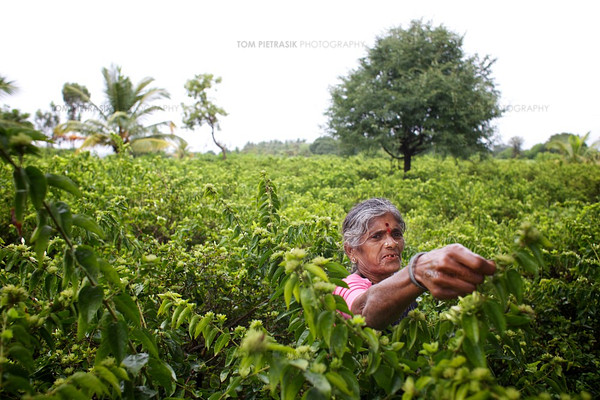

Assessments and Background Documents
India's Second National Communication - Official Document - May 2012
India, situated below the Himalayas and lying in the sub tropical terrain, is adorned with a largely diverse topography, climate and biosphere, spanning a geographic area of 3.28 million km2. Occupying almost 2.3% of the world’s land area, it is the 7th largest country in the world but holds nearly 18% of the world’s population. This puts the nation under great stress to ably maintain a sustainable development pathway and to harness its resources efficiently. India shelters over 1.21 billion people representing various socio-cultural groups that collectively make up the world’s largest democracy.
India has reasons to be concerned about the impacts of climate change. Its large population depends on climate-sensitive sectors like agriculture and forestry for livelihoods. Any adverse impact on water availability due to recession of glaciers, decrease in rainfall and increased flooding in certain pockets would threaten food security, cause die back of natural ecosystems including species that sustain the livelihoods of rural households, and adversely impact the coastal system due to sea level rise and increased frequency of extreme events. In addition to these impacts, achievement of vital national development goals related to other systems such as habitats, health, energy demand, and infrastructure investments would be adversely affected. India’s land surface may be classified as (a) the Great Mountain Wall of the North; (b) the Northern Plains; (c) the Great Southern Peninsular Plateau; (d) the Coastal Plains; and (e) the Islands. India’s unique geography produces a spectrum of climates yielding a wealth of biological and cultural diversity. Land areas in the north have a continental climate with high summer temperatures with cold winters when temperatures may go below freezing.
In contrast are the coastal regions of the country where the temperature is more even throughout the year and rains are more frequent. There is large variation in the amounts of rainfall received in different parts of the country. Average annual rainfall is less than 13 cm in the Thar desert, while at Cherrapunji in the North- East it is as high as 1080 cm. The different climate regimes of the country vary from humid in the North- East (about 180 days rainfall in a year) to arid in Rajasthan (20 days rainfall in a year). A semi-arid belt in the peninsular region extends in the area between the humid west coast and the central and eastern parts of the country. The most important feature of India’s climate is the season of concentrated rain called the “monsoon”. The Southwest (SW) monsoon (May - September) is the most important feature of the Indian climate.
India is a land with many rivers. The twelve major rivers spread over a catchment area of 252.8 million hectares (Mha) cover more than 75 per cent of the total area of the country. Rivers in India are classified as Himalayan, Peninsular, Coastal, and Inlanddrainage basin rivers. The land use pattern is influenced by diverse factors such as population density, urbanization, industry, agriculture, animal husbandry, irrigation demands, and natural calamities like floods and droughts. Despite stresses, the area under forests has increased in recent years due to proactive reforestation and afforestation programmes of the Government of India. Presently 23 per cent of the total land area is under forest and tree cover, while 44 per cent is net sown area. The remaining one-third is roughly equally distributed between fallow land, non-agricultural land, and barren land. The following section is found in the Meister Consultants Group study: *Floating Houses and Mosquito Nets: Emerging Climate Change Adaptation Strategies Around the World.
Strategy and Actors
India was an early adopter of the climate change adaptation and awareness strategies. It has also fostered the debate on global warming in international politics. For instance, during the conference of the signatory states of the United Nations Framework Convention on Climate Change, held in Delhi in 2002, India pushed for a joint declaration on the significance of global warming. The Indian report to the UNFCCC also emphasizes the need to assess vulnerabilities and to plan adaptation measures. In June 2008, India’s prime minister published the National Action Plan on Climate Change (NAPCC), which encompasses both climate protection and adaptation. 191 The plan defines eight priorities as National Missions: solar energy; energy efficiency; sustainable housing; water; preservation of ecosystem in the Himalayas; reforestation; sustainable agriculture; and strategic knowledge management. The responsible ministries are currently working on detailed implementation plans for these eight sectors. Adaptation measures are an important part of this integrated climate strategy. The first two areas (solar energy and energy efficiency) are mainly focused on climate protection, while the others include adaptation components, especially in the cases of agriculture and of knowledge management. What follows is a summary of the adaptation goals. This summary shows that the Indian government has already set strategic adaptation priorities. However, detailed planning and implementation of the measures is only just beginning.
- Decreased snow cover, affecting snow-fed and glacial systems such as the Ganges and Brahmaputra; 70 per cent of the summer flow of the Ganges comes from snowmelt;
- Erratic monsoons with serious effects on rain-fed agriculture, peninsular rivers, water and power supply;
- Decline in wheat production by 4-5 million tonnes with as little as a 1ºC rise in temperature;
- Rising sea levels causing displacement along one of the most densely populated coastlines in the world and threatening freshwater sources and mangrove ecosystems;
- Increased frequency and intensity of floods; increased vulnerability of people in coastal, arid and semi-arid zones of the country; and
- Over 50 per cent of India’s forests are likely to experience a shift in forest types, adversely impacting associated biodiversity and regional climate dynamics, as well as livelihoods based on forest products.
- Islam, Faisal; Hove, Hilary; Parry, Jo-Ellen. (2011) “Review of Current and Planned Adaptation Action: South Asia.” Adaptation Patnership/International Institute for Sustainable Development, pp. 86-107.
- Government of India [GOI] (2008). India’s National Action Plan on Climate Change. Retrieved from http://pmindia.nic.in/Pg01-52.pdf
- Kumar, R. (2008). Climate Change and India: Impacts, policy responses and a framework for EU-India cooperation. European Parliament report no. IP/A/CLIM/NT/2007-10, PE 400.991.
- Mehra, M. (2009). India Starts to Take on Climate Change. State of the World 2009. Washington DC: Worldwatch Institute.
- Ministry of Environment and Forests [MEF] (2004). Initial National Communications to the United Nations Framework Convention on Climate Change. Retrieved from http://unfccc.int/essential_background/library/items/3599.php?rec=j&priref=4870#beg107
- United States Department of State [USDS] (2010). Background Notes: India. Last updated July 14, 2010. Retrieved from http://www.state.gov/r/pa/ei/bgn/3454.htm
- Sustainable development and the integration of climate change concerns into medium- and long-term planning
- Inventories of anthropogenic emissions by sources and removals by sinks of greenhouse gases
- Measures contributing to addressing climate change
- Research and systematic observation
- Climate change impacts, adaptation measures and response strategies
- Education, training and public awareness
Identification of specific research themes related to adaptation and mitigation aspects:
Forests:
Our present state of knowledge on the relationship between climate and plant performance is grossly inadequate for the purpose of modeling future climate change impacts. Research in the following areas is thus a key prerequisite for coming up with robust adaptation strategies.
1. Ecological research on plant and animal species and communities in relation to climate variability and change: Keeping in view the sensitivity of plant and animal species to climate variability and change, the ecological studies of plant and animal species, plant–animal interactions, and community in relation to climate variability and change are required to be carried out.
2. Dynamic vegetation modeling of climate change impacts on forest ecosystems, biodiversity and adaptation: The few studies so far conducted in India are largely based on equilibrium models, which assume that one forest type is replaced by another forest type under changing climate. The varying climate tolerances of different plant species and the transient phase response of plant species subjected to climate change are not analyzed. There is a need to adapt the existing dynamic vegetation models for application to the diverse tropical forest types in order to analyze the implications of climate change at species level. The ultimate goal is to develop adaptation strategies and practices to reduce vulnerability of forests to climate change. The modeling effort should incorporate adaptation.
3. Impact of climate change on mitigation potential, carbon sinks, and adaptation: India has a large afforestation programme, and it is important to understand the likely impacts of climate change to ensure sustainable management of forests and flow of timber, industrial wood, and non-timber products and conservation of biodiversity. There is a need to analyze the climate impacts using dynamic vegetation models and developing adaptation strategies.
4. Mitigation potential assessment: There is also a need to develop a database on biomass growth rates and soil carbon accumulation rates in forests and plantation systems in different agro-ecological zones of India. This data is required for a realistic assessment of the mitigation potential of the forest sector in India.
Agriculture
Agriculture is a key sector in India, as a vast population base of the country still lives in rural areas and depends for its food and livelihoods requirement on agriculture. The agriculture sector is hugely dependent on climate parameters such as rainfall and temperature, and therefore, a significant amount of the country’s resource needs to be expended in identifying appropriate adaptation strategies for the agriculture sector, so as to ensure food security for the nation as well livelihoods security for its vast population. Some adaptation strategies are listed below, which would require considerable research resources in the future.
Conservation Agriculture (Efficient use of resources):
Resource conserving technologies involving zero or minimum tillage with direct seeding, permanent or semi-permanent residue cover, and crop rotations have the potential to improve the efficiency of use of natural resources, including water, air, fossil fuel, and soil. Among other things, the efficiencies gained include less land and time needed to produce the required staple cereals and allowing farmers to diversify crops and cropping patterns or pursue other gainful activities. The technologies can improve the sustainability of the cropping system by conserving the resource base and higher input use efficiency and also mitigating GHG emission.
Change in crop management: Crop management, such as short, medium, and long duration variety; change in sowing time, which includes early as well as late sowing relative to current sowing time; increasing the seed replacement rate by the farmers; and change in irrigation patterns and fertilizer application for increased input use efficiency, should be pursued.
Crop diversification: Diversification of crop and livestock varieties, including the replacement of plant types, cultivars, hybrids, and animal breeds with new varieties intended for higher drought or heat tolerance, has been advocated as having the potential to increase productivity in the face of temperature and moisture stresses. Diversity in seed genetic structure and composition has been recognized as an effective defense against disease and pest outbreak and climate hazards. Moreover, the demand for high value foods such as fruits, vegetables, dairy, meat, eggs, and fish is increasing because of growing income and urbanization. This is reducing the demand for traditional rice and wheat. Diversification from rice–wheat to high value commodities will increase income and result in reduced water and fertilizer use. However, there is a need to quantify the impacts of crop diversification on income, employment, soil health, water use, and GHG emission. The most significant problem to overcome is that diversification is costly in terms of the income opportunities that farmers forego, that is, switching crop varieties can be expensive, and making crop diversification typically less profitable than specialization. Moreover, traditions can often be difficult to overcome and will dictate local practices.
Adjusting cropping season: Adjustment of planting dates to minimize the effect of temperature increase- induced spikelet sterility can be used to reduce yield instability, by avoiding having the flowering period to coincide with the hottest period. Adaptation measures to reduce the negative effects of increased climatic variability as normally experienced in arid and semi-arid tropics may include changing the cropping calendar to take advantage of the wet period and avoiding extreme weather events (for example, typhoons and storms) during the growing season. Cropping systems may have to change to include growing suitable cultivars (to counteract compression of crop development), increasing crop intensities (that is, the number of successive crop produced per unit area per year) or planting different types of crops. Farmers will have to adapt to changing hydrological regimes by changing crops.
Augmenting production and income: Production can be enhanced by improved crop management, improved adverse climate tolerant varieties, improved seed sector, using technology dissemination mechanisms, making available capital and information, which are the key reasons for yield gaps. Watershed management programme can yield multiple benefits. Such strategies could be very useful in future climatic stress conditions. Income can be increased from agricultural enterprises by suitable actions such as accelerated evolution of location- specific fertilizer practices, improved fertilizer supply and distribution system, improved water and fertilizer use.
Early warning system and crop insurance: Improved risk management can be carried out through early warning system and crop insurance policies that encourage crop insurance and can provide protection to the farmers if their farm production is reduced due to natural calamities. In view of these climatic changes and the uncertainties in future agricultural technologies and trade scenarios, it will be very useful to have an early warning system of environmental changes and their spatial and temporal magnitude. Such a system could help in determining the potential food-insecure areas and communities, given the type of risk. Modern tools of information technology could greatly facilitate this.
Water management: In situ soil–water management, particularly in arid and semi-arid regions, where crop growth is severely limited by water deficit even if nutrient availability is adequate, is important for enhancing productivity and organic carbon content of soil. Water harvesting techniques and micro catchments are extremely beneficial in increasing biomass production in arid climates. Waste water and solid waste in agriculture should be recycled as freshwater supplies are limited and water has competing uses, and it would become even more constrained in changed global climate. Industrial and sewage waste water, once properly treated, can also be a source of nutrients for crops. Since water serves multiple uses and users, effective inter-departmental coordination in the government is needed to develop the location- specific framework of sustainable water management and optimum recycling of water.
Post-harvest management: Harvest and post-harvest management should be carried out for minimizing the losses due to extreme climatic events or mean climate change conditions. Providing community-based post- harvest storage spaces at village level can help the farmer to save the produce from exposure to any climate related extreme event. Research efforts are required to design the storage structures and efficient processes for changed climate scenarios.
Harnessing the indigenous technical knowledge of farmers: Farmers in South Asia, often poor and marginal, are experimenting with the climatic variability for centuries. There is a wealth of knowledge for a range of measures that can help in developing technologies to overcome climate vulnerabilities. There is a need to harness this knowledge and fine-tune it to suit the modern needs.
Agriculture has the potential to cost-effectively mitigate GHGs through changes in agricultural technologies and management practices. Mitigation of GHG emission from agriculture can be achieved by sequestering carbon in soil and reducing methane and N2O emissions from soil through change in land use management. Changing crop mixes to include more plants that are perennial or have deep root systems increases the amount of carbon stored in the soil. Cultivation systems that leave residues and reduce tillage, especially deep tillage, encourage the build- up of soil carbon. Shifting land use from annual crops to perennial crops, pasture, and agro-forestry increase both above- and below-ground carbon stocks. Changes in crop genetics and the management of irrigation, fertilizer use, and soils can reduce both N2O and methane emissions. Such options are not only important for global warming mitigation but also for improving soil fertility.
Sequestration of C in agricultural soil: Mitigation of CO2 emission from agriculture can be achieved by increasing carbon sequestration in soil through application of organic manure, change in soil management, and restoration of soil carbon on degraded land. Soil management practices such as reduced tillage, manuring, residue incorporation, improving soil biodiversity, micro-aggregation, and mulching can play an important role in sequestering carbon in soil. Sequestration of carbon in soil is not only important for global warming mitigation but also for improving soil fertility.
Mitigating methane emission from rice fields:
The strategies for mitigating methane emission from rice cultivation could be altering water management, particularly promoting mid-season aeration by short- term drainage; improving organic matter management by promoting aerobic degradation through composting or incorporating it into soil during off-season drained period; use of rice cultivars with few unproductive tillers, high root oxidative activity, and high harvest index; and application of fermented manure like biogas slurry in place of unfermented farmyard manure. Direct-seeding of rice (DSR) could be a potential option for reducing methane emission. Methane is emitted from soil when it is continuously submerged as in case of conventional puddled transplanted rice. However, the DSR crop does not require continuous soil submergence, thereby reducing or totally eliminating methane emission when it is grown as an aerobic crop. As the DSR reduces methane emission drastically it has considerable potential (about 75%) to reduce the global warming potential (GWP) compared to conventional puddled transplanted rice.
Efficient manure management using biogas plant for global warming mitigation: Biogas technology, besides supplying energy and manure, provides an excellent opportunity for mitigating GHG emission and reducing global warming through substituting firewood for cooking, kerosene for lighting and cooking, and chemical fertilizers. The global warming mitigation potential of a family-size biogas plant is about 10 t CO2 eq/year.
Mitigating N2O emission: The most efficient management practices to reduce N2O emission are site-specific nutrient management and use of nitrification inhibitors such as nitrapyrin and dicyandiamide. There are some plant-derived organics such as neem oil, neem cake, and karanja seed extract, which can also act as nitrification inhibitors.
Livestock Sector
The livestock sector is one of the significant contributors to GHG emissions in India. Large uncertainties exist in the livestock enteric methane emission estimates due to variations in livestock breeds, body weights, growth, feed quality and resources and their digestibility, milk production, and emission coefficients.
Livestock species of India are well-adapted breeds, and prospects for these animal species to adapt to increased air temperature through traditional breeding and genetic modifications appear to be promising. More research on possible adaptation of these species to elevated CO2 is needed. The loss in milk yield of these adapted species has been observed to be small due to rise in temperature, suggesting that adapted species will more consistently yield produce under climate change scenarios in tropical latitudes than in temperate latitudes.
Livestock production with scientific management practices will reduce production losses. Livestock management and proper housing under tropical conditions will help in abating extreme productivity losses.The livestock producer awareness of livestock threshold for physiological stress can help in the adaptation of livestock to climate change and reducing losses due to temperature variability and rise due to climate change. Impacts of climate change on livestock after adaptation are estimated to result in small percentage changes in income; these changes tend to be positive for a moderate global warming, especially when the effects of temperature rise are taken into account. The effectiveness of adaptation in ameliorating the economic impacts of climate change on livestock across India will depend on local or on regional resource endowments.
A review of various adaptation strategies needs to be carried out to estimate future requirements of livestock (species and breeds) to assess the impact of climate change. There should be a scientific development of impacts inventory for different livestock species based on quantitative modelling outputs and qualitative assessments. Assessment of the impacts in monetary values for policy decisions making, use of multipurpose adapted livestock species and breeds to minimize impacts, and superior breeds with higher productivity (meat, milk, wool or draught) may be encouraged only for commercial use, and a livestock mix at farm level has to be made available to our farmers. Farmers need to be educated about the consequences of climate change and options. Preventive methods for diseases and vector spread may be taken. Use of suitable animal management practices (some strategies and the related description is given in Table 7.5) to reduce negative impact on yield and production by short-term and long-term strategic planning is to be formulated and executed at grassroot level.
Mitigating methane emissions from livestock production system: Methane production from livestock, either directly through the livestock production system or indirectly through changes in the biodiversity, has significantly contributed to the GHG flux emanating from India. Livestock production can also result in emissions of N2O. However, there are ways through which GHG emissions can be reduced from livestock through various kinds of management and technical strategies, which would at the same time enhance production efficiency and result in lower emissions per unit of milk or meat produced.
There are a number of options that exist to assist in minimizing the effect of heat stress on livestock. The two primary options are making some ration adjustments and altering the environment that the animals live in. Mitigation of methane production from ruminants has both long- term environmental and short-term economic benefits. Manipulations in rumen through different possible options are beneficial to reduce the methane production by decreasing the fermentation of organic matter in the rumen, shifting the site of digestion from the rumen to the intestine, diverting H+ for more propionic acid production, and inhibiting the activity of methanogens.
In addition to the enteric fermentation contribution of methane from ruminants, one of the major GHG emission contributions from livestock production is from forage or feed crop production and related land use. Proper pasture management through rotational grazing is the most cost-effective way to mitigate GHG emissions from feed crop production. Animal grazing on pasture also helps reduce emissions. Introducing grass species and legumes into grazing lands can enhance carbon storage in soils. Improving the management of animal waste products through different mechanisms, such as the use of covered storage facilities, is also important. The level of GHG emissions from manure (methane, N2O, and methane from liquid manure) depends on the temperature and duration of storage. Long-term storage at high temperatures results in higher GHG emissions. In the case of ruminants, pasture grazing is an efficient way to reduce methane emission from manure because storage is not necessary.
Agriculture contributes to about 17.6% of the total GHG emissions of the country (MoEF, 2010). Considering the growing demand for food in the near future and the need for ensuring food and nutritional security of the nation, the Department of Agriculture and Co-operation (DAC) proposes an emphasis on growth in food production rather than on mitigating GHG emissions from the agriculture sector. However, apart from the two broad areas proposed for further research in mitigation of climate change i.e. emission from rice fields and N2O emission due to nutrient management; there is a need to develop research themes that have more focus on mitigating GHG emissions from the livestock sector (According to MoEF, 2010; out of the total GHG emissions from the agriculture sector, a majority share i.e. 63.6% is contributed by livestock).
Vulnerability Assessment and Adaptation
The six critical priorities of the Indian planning process are as follows:
1. Economic security
2. Energy security
3. Environmental security
4. Water security
5. Food security
6. Provision of shelter and health for all
Climate change would impact all of these in varying degrees. Linking of these priority concerns with climate change policies is the key to harmonizing sustainable development and climate change actions. Research has been initiated under the SNC process to assess potential impacts of climate change on some of these concerns, such as Indian agriculture, water resources, forestry, coastal zones, natural ecosystems, human health, industry, and infrastructure, including construction of consistent climate change scenarios for India and assessment of extreme events using existing models and expertise. The work involves assimilation of existing research work, identification of vulnerable sectors and areas, and a few specific case studies for each sector. Lack of data and national databases, resource scarcity, unavailability of sub-regional and sectoral impact assessment scenarios, lack of modelling efforts and trained manpower, and limited national and regional networking of institutes and researchers are some of the constraints highlighted. The key conclusions that emerged from these assessments are as follows:
First, during the current century, under plausible global emissions scenarios, the climate over the Indian sub- continent would be significantly altered, with regional variations in temperature and precipitation as well as in the distribution of the extreme climatic events like hurricanes.
Second, this would be a century of development for India, accompanied by rising incomes, stabilized population (by the later half of the century), integration with global markets, and enhanced social-infrastructure. The effects of this would be increased energy consumption on the one hand and enhanced mitigative and adaptive capacity on the other.
Third, climate change would impact the key sectors of the Indian economy, and in the absence of adaptation strategies, could cause significant damage. The water, agriculture, and forest sectors would experience direct impacts. In these sectors, understanding the regional variability of climate change across different agro-climatic zones would be the key to develop the response strategies. The ecosystems would experience direct stress from the altered climate. The impacts would vary across species and regions. Thus, it is important to identify the vulnerable species, examine their migration capabilities, and develop strategies to enhance resilience and survival.
Fourth, the direct and indirect effects of climate change on health are vital. While the temperature rise and increased precipitation may exacerbate the vector-borne diseases such as malaria and its spread to newer areas, such as higher altitudes in Himalayan mountains; the rising incomes, medical inventions, and increased supply of social infrastructure would cause benign effects that would mitigate the health impacts.
Fifth, the human activities as well as natural processes along the long coastline of India are especially vulnerable to changes in climatic parameters and secondary effects like the rising sea level and increased hurricane activities. Globalization processes are already adding environmental stresses in coastal regions, as trade tends to concentrate economic activities and population in the coastal areas.
Finally, in summation, the impacts and vulnerability would be decided on the one hand by the extent of climate change and on the other by the pace and quality of development in the country. While a successful global climate regime could keep the concentrations of GHGs in the atmosphere within dangerous limits, the quality of development would be the prime insurance at the national level to deal with the adverse impacts of climate change.
The key tasks to address vulnerability and adaptation may be viewed in the matrix of strategies and geographic hierarchy (Table 7.6). Climate change is a long-term issue, that is, the change in climatic parameters and their impacts would continue to exacerbate over decades and centuries.Therefore, the type and intensity of interventions would enhance with the expiry of time. Strategically, we therefore propose only the immediate, that is, near-term tasks to keep adjusting to the advancing knowledge of climate change and its impacts, emerging technologies, and emerging signals from the global policy regime.
In the short-run, that is, within a decade, the immediate tasks are to enhance capacity for scientific assessment, generate awareness among the stakeholders, and institutionalize learning processes. These tasks were effectively initiated within the process for preparing the INC. A network of research institutions exists in India, which houses excellent competences in different areas of assessment (like INCCA). In India, other organized stakeholders like the industry associations and NGOs are already participating in the climate change activities. The institutionalization of the existing research initiatives – first via coordinated networks and later via the creation of centres of excellence – would be a key task. The global assessments, especially by the IPCC, are pertinent inputs into the national assessment. Indian experts are contributing to the IPCC assessments over the past decade. Organizing a cell of experts, especially those participating in the current global assessments, and linking it with the government processes would enhance the Indian assessment, besides improving inputs from the country into the IPCC assessments. The Indian Network for Climate Change Assessment (INCCA) has been constituted to institutionalize the various aspects of climate change related research.
While major investments in adaptation technologies may wait, creating technology knowledge base would be essential to reduce transaction costs and transition time. In case of projects building long-life assets, such as infrastructure, including future climate change in the project impacts assessment would be critical. In the short run, building partnerships is another key task. Awareness among stakeholders is essential for this. In brief, the short- term tasks would focus on soft processes that involve capacity building for assessment, technological learning, partnerships among stakeholders, databases and models to support policy making, vertical-geographical integration of assessment, instituting policy-science interface between government and researchers, and initiating pilot work on economic instruments, such as insurance, for efficient implementation of response strategies.
The medium and long-run tasks would best get crafted with time. Though the specifics of these tasks and timetable of their implementation are uncertain, an a priori speculation of these tasks indicates that instituting measurement systems to assess the extent of impacts in critical sectors would be an important task.The involvement of local actors in developing and implementing adaptation response strategies is critical since the impacts by their very nature are sector- and locale-specific. A vital task would be to institute self-driven and efficient mechanisms under a global umbrella such as the insurance markets, and adequate funds for adaptation technology development and transfer to Non-Annex I countries.
In the final analysis, any new initiatives, institutions, and policies are executed through existing institutions and under prevailing conditions. The apparently perfect strategies designed to address a specific issue, such as climate change, would be implemented via markets, institutions, and organizations that are far from perfect in developing countries. The tasks delineated above, therefore, will have to be moderated and adapted to the realities of the prevailing national dynamics. In India, the present policy dynamics are imbued with reforms perspective. This offers positive opportunities for efficient execution of new initiatives. This notwithstanding, the vulnerability and adaptation strategies to deal with climate change have inherent implementation difficulties on three counts. First, efficient markets to deal with natural climate variability are weak. This is evident from the incomplete and inadequate insurance cover for crop failures and against hurricanes. Second, the insurance market to address the added variability from anthropogenic climate change operates over the distorted baseline of existing insurance market for natural climate variability. The incremental damages due to anthropogenic forcing on climate are difficult to isolate from the baseline climate variability. This makes it difficult to assess incremental damages as well as incremental cost of adaptation. Third, implementation and coordination failures are frequent in developing countries. The damages, therefore, may far exceed those feasible under an efficient system. Vulnerabilities, therefore, appear exaggerated compared to what they would be under an efficient market system or an effective public governance system. The National Action Plan on Climate Change has underscored the use of market mechanisms, wherever and whatever extent possible, in mitigating harmful impacts due to climate change.
The future poses added perception problems for vulnerability assessments. Sector specialists, who are generally scientists or domain experts, carry out most assessments. The scientific assessments make projections of impacts of climate change on specific sectors in a distant future, such as 100 years from now. However, the scientific assessments often fail to grasp the significantly altered social, political, and economic dynamics that would exist after 100 years, especially in developing countries. The scientific assessments thus err in assuming future climate to be operating in the present society. For instance, the impacts assessment
on agriculture miss the fact that farmers of distant future in India would be living in a country with high average annual per capita income and would operate their farming business in an interconnected world with significant global trade in agriculture commodities, having access to superior weather-resistant seeds and efficient cultivation practices. The country would be less likely to have food security as its prime concern, and farmers are unlikely to face starvation. Similarly, the residents of India then would have better access to health and sanitation services and improved medicines. The malaria would be less likely to spread under such conditions, unlike in the present society exposed to the future hot and humid climatic conditions. The key to valid vulnerability assessment would be to assess the future impacts of climatic changes in the context of the then prevailing socio-economic conditions through articulated and structured socio-economic scenarios.
These observations point to a vital nexus between development and climate change. Conventionally, the vulnerability assessments and search for adaptation solutions have been confined to climate change science and policy. The development is then viewed as exogenous to the assessment, at best offering some ancillary benefits. The climate change vulnerability and adaptation assessments conducted for India under the SNC project validate the alternate perspective that considers development as the key contributor of adaptive and mitigative capacities. This perspective shifts the search for adaptation solution away from climate change science and policy to the broader domain of development policies. The real baselines then emerge as the point of departure of the analysis rather than as barriers to achieving efficient solutions in the ideal domain. Development then emerges as the source of solutions for climate change and its impacts, rather than its root cause. The key lesson is that the national development priorities, driven along sustainable pathways, can be the drivers of benign environmental changes. Thus, the integration of well-crafted development and climate actions would not only benefit development, but shall also redress the climate change vulnerabilities in developing countries. The architecture of an effective climate change regime thus rests on the foundation of a robust development regime. If there is to be a reorientation of the energy and other sectors in developing countries to meet the climate change and sustainable development challenges, there is a wide agreement that technology will play a central role in this transformation.
India makes capital goods to the tune of INR 260,000 crores. This sector comprises Heavy Electrical Machinery, Earth Moving Machinery, Industrial Machinery, Engineering Sector and Machine Tools. The sector has a ‘multiplier’ effect on energy consumption. Energy efficient machinery will save MWs of energy during its lifecycle. Indian technologies for the manufacture of these machineries lag behind the international best designs from energy use perspective. The Indian industry needs technology, finance and standards in order to achieve global standards.
In the case of automobiles, emission norms have already been introduced and the study of manufacturing plan of electric mobility in the Department of Heavy Industry is underway. In Heavy Industrial and Electrical Machinery sector, Working Group on Capital Goods & Engineering Sector recommended the manufacture of machinery with new technology with certain percentage of value addition and import of brand new energy efficient machineries as against import of second hand machines by the Indian industry.
Technology Needs for Adaptation and Mitigation
Given that the technology needs of the developing countries in relation to climate challenges are diverse and that deployment often requires a range of activities (not only technical, but many others as well), the term “technology transfer” provides too narrow a perspective and framework for successfully leveraging technologies for meeting climate challenges. The agenda for moving ahead must be viewed with the understanding that the necessary elements must be appropriately tailored both to the specifics of the technology as well as national circumstances. At the same time, the importance of controlling GHGs “through the application of new technologies on terms that make such an application economically and socially beneficial” must also be recognized, as highlighted in the UNFCCC.
Framework for leveraging technology for meeting the climate challenge:
1. Financial assistance: In cases where the high cost is the barrier to the deployment of improved energy technologies that advance climate mitigation as well as the development agenda, industrialized countries will need to fund the incremental costs of these technologies. Such an approach has already been implemented by the Global Environmental Facility (GEF). One possibility may be to develop a policy of graduated financial assistance, where a portion of the incremental costs would be covered by developed countries.
2. Technology deployment in Annex I countries: There is an urgent need to begin deploying improved energy technologies in industrialized countries. In the case of technologies in the pre-commercial or early deployment stage, enhancing deployment in industrialized countries could be the fastest route to cost reduction, as the benefits of “learning-by-doing” accumulate. While large-scale deployment is unlikely to take place in the absence of national climate mitigation policies, targeted policies aimed at key technologies need to be implemented sooner rather than later.
3. Joint technology development: This involves a cooperative technical programme that is driven by technology needs of developing countries rather than the technology agenda of industrialized countries. Such a programme would have elements that cover all aspects of technological development, from basic research to demonstration and early deployment, with the combination of activities for any specific technology being shaped by a nuanced understanding of the innovation gaps for that technology. In the case of mature, well-developed commercial technology such as supercritical power plants, this programme would involve refinement and adaptation of technologies to meet local conditions. In the case of emerging technologies such as fuel cells, the programme would involve some joint applied R&D, significant adaptation to local conditions, and even joint demonstration activities.
4. Knowledge sharing for enhancing deployment:
This is particularly important where non-economic barriers hinder the deployment of technology that otherwise make sense from the economic, climate and/ or Sustainable Development point of view. Sharing of experiences in industrialized or other developing countries and adopting policy approaches to overcome these barriers should be very helpful. At the same time, exploration of new and innovative mechanisms should also yield valuable results. Furthermore, analysis and development of appropriate policies and programmatic approaches, tailored to the needs of specific technologies and national circumstances, would be helpful. It also would be useful to explore alternative ways of enhancing and accelerating innovation such as innovation challenges/prizes, the creation of guaranteed markets, and IP-sharing approaches.
Capacity building in Non-Annex I countries: Since climate challenge is a long-term challenge, a case can be made that building local innovation capacity in developing countries will be critical for helping with adaptation, development of appropriate technologies, and effective deployment. This would not come about just from staffing a few high-tech laboratories, but also from training the next generation of technically competent people.Therefore, it is critical to strengthen local education and research institutions and ensure that they link up to international innovation activities.
Source: India's Second National Communication (May 2012)
In 1992, countries joined an international treaty, the United Nations Framework Convention on Climate Change, to cooperatively consider what they could do to limit average global temperature increases and the resulting climate change, and to cope with whatever impacts were, by then, inevitable.
Parties to the Convention must submit national reports on implementation of the Convention to the Conference of the Parties (COP). The required contents of national communications and the timetable for their submission are different for Annex I and non-Annex I Parties. This is in accordance with the principle of "common but differentiated responsibilities" enshrined in the Convention.
The core elements of the national communications for both Annex I and non-Annex I Parties are information on emissions and removals of greenhouse gases (GHGs) and details of the activities a Party has undertaken to implement the Convention. National communications usually contain information on national circumstances, vulnerability assessment, financial resources and transfer of technology, and education, training and public awareness.
Since 1994, governments have invested significant time and resources in the preparation, collection and validation of data on GHG emissions, and the COP has made determined efforts to improve the quality and consistency of the data, which are ensured by established guidelines for reporting. Non-Annex I Parties receive financial and technical assistance in preparing their national communications, facilitated by the UNFCCC secretariat.
Guyana's Second National Communication
The creation of a National Communication offers countries the opportunity to contribute with technically sound studies and information that can be used for designing mitigation and adaptation measures, and project proposals that can and will help increase their resilience to the impacts of climate change. Activities generally include: V&A assessments, Greenhouse Gas Inventory preparation, Mitigation Analysis or Education, and awareness raising activities. The ultimate goal is the integration of climate change considerations into relevant social, economic and environmental policies and actions.
Protection for the sustainable management of biodiversity is important to achieving the Millennium Development Goals (MDGs). These goals are unlikely to succeed if environmental sustainability and access to energy services for the poor are not fully addressed.
To view progress on Guyana's SNC click here.

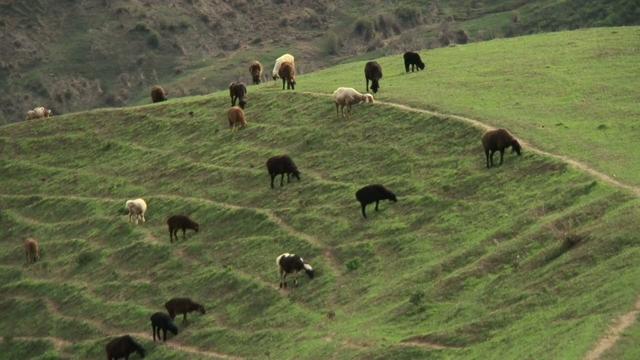
Guyana, based on the 1994 national inventory, makes only a minor contribution to emissions of greenhouse gases. However, increases in the global mean temperatures could have significant impact, especially on the coastal plain and on activities including the dominant agriculture sector in Guyana.
Guyana is a tropical country situated on the northeastern coast of South America. It is bounded on the north by the Atlantic Ocean, on the east by Suriname, on the south by Brazil and on the west by Venezuela. It is an English-speaking country with close ties with the English-speaking Caribbean Islands. It is a member of the Caribbean Community (CARICOM) which has its headquarters in Georgetown, the capital city.
Protection for the sustainable management of biodiversity is important to achieving the Millennium Development Goals (MDGs). And these goals are unlikely to succeed if environmental sustainability and access to energy services for the poor are not fully addressed.
UNDP aims to help the Government of Guyana to strengthen its capacity to address these challenges at national and community levels by seeking out and sharing best practice, providing innovative policy advice and linking partners through pilot projects so that poor people can have access to the help they need to build sustainable livelihoods.
Guyana occupies 214,970 km2 and boasts a rich biodiversity, thanks to its location at the edge of the Amazon basin. It is estimated that forestry covers 78% of the country. Guyana has the following characteristics:
- It is a low-lying state with a vulnerable coastal strip 77 km wide in the east and 26 km wide in the western Essequibo region.
- Ninety percent (90 %) of the population resides in the coastal strip where the main urban centres and commercial activities are to be found.
- There is a wide range of geographic types with coastal, hilly sandy, highland, forested and savannah regions.
- There is no current tectonic activity in Guyana and indications are that the Guyana shield (and the coastal strip, in particular) will not be affected by convergence of the South and North American plates.
- There is a high level of rainfall variability in the country and the seasons and climate are determined mainly by this variability. There are two wet and two dry seasons. First Dry Season (February to April); First Wet Season (April to July) Second Dry Season (July to November); and the Second Wet Season (November to January)
The country can be divided into climatic regions ranging from dry (annual rainfall less than 1788 mm) to extremely wet (annual rainfall greater than 4100 mm).
- Sustainable development and the integration of climate change concerns into medium- and long-term planning
- Inventories of anthropogenic emissions by sources and removals by sinks of greenhouse gases
- Measures contributing to addressing climate change
- Research and systematic observation
- Climate change impacts, adaptation measures and response strategies
- Education, training and public awareness
In 1992, countries joined an international treaty, the United Nations Framework Convention on Climate Change, to cooperatively consider what they could do to limit average global temperature increases and the resulting climate change, and to cope with whatever impacts were, by then, inevitable.
Parties to the Convention must submit national reports on implementation of the Convention to the Conference of the Parties (COP). The required contents of national communications and the timetable for their submission are different for Annex I and non-Annex I Parties. This is in accordance with the principle of "common but differentiated responsibilities" enshrined in the Convention.
The core elements of the national communications for both Annex I and non-Annex I Parties are information on emissions and removals of greenhouse gases (GHGs) and details of the activities a Party has undertaken to implement the Convention. National communications usually contain information on national circumstances, vulnerability assessment, financial resources and transfer of technology, and education, training and public awareness.
Since 1994, governments have invested significant time and resources in the preparation, collection and validation of data on GHG emissions, and the COP has made determined efforts to improve the quality and consistency of the data, which are ensured by established guidelines for reporting. Non-Annex I Parties receive financial and technical assistance in preparing their national communications, facilitated by the UNFCCC secretariat.
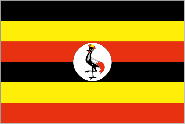


 Press Release - Developing of Impact Indicators for the Ecosystem-based Adaptation Project in Uganda takes off, 31 Jul 2014
Press Release - Developing of Impact Indicators for the Ecosystem-based Adaptation Project in Uganda takes off, 31 Jul 2014